The 30 best war movies of all time
From Saving Private Ryan to The Great Escape, we look back at the best war movies of all time
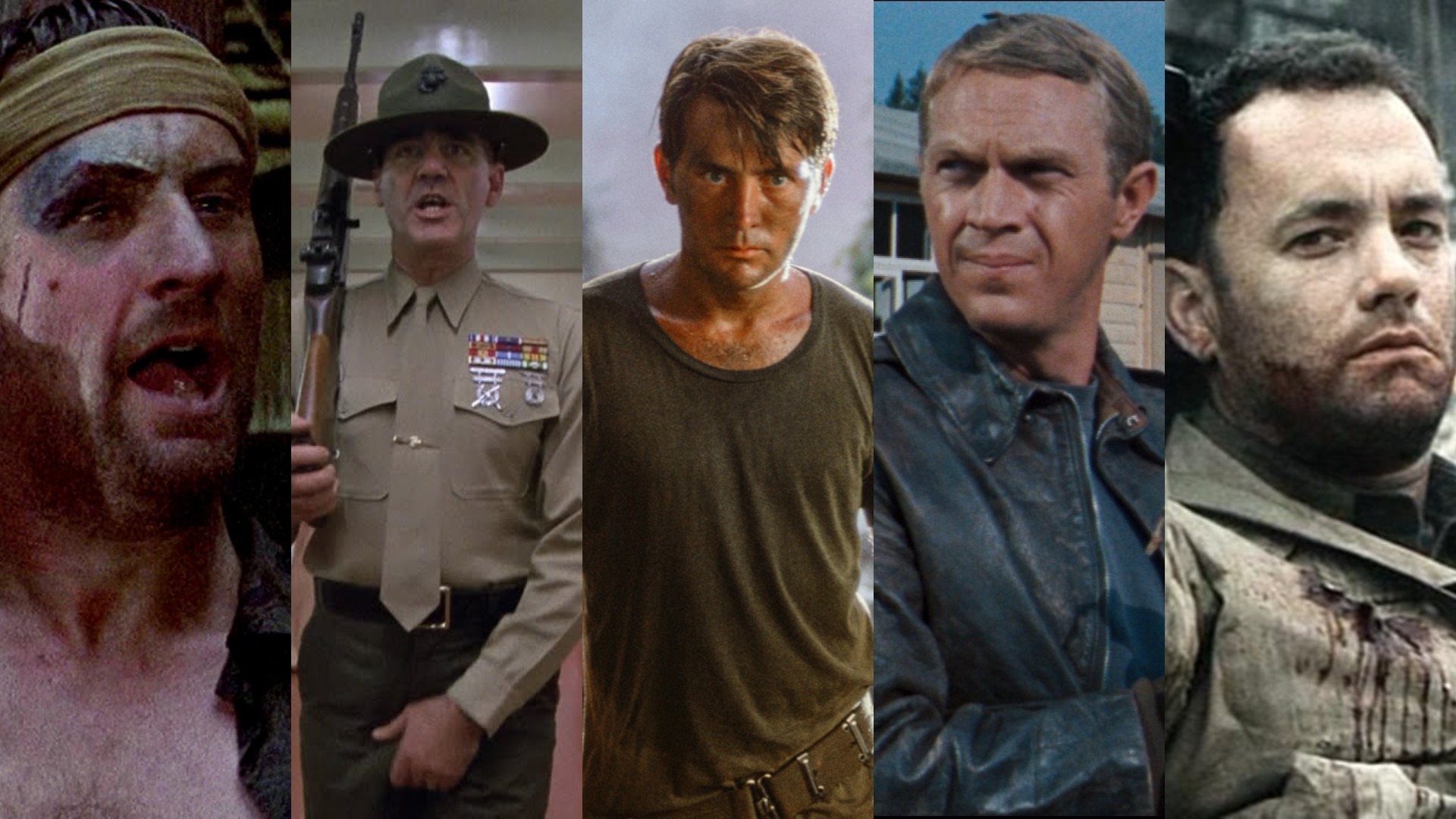
On the 75th anniversary of Victory in Europe Day (VE day), we look back at the best war movies ever made – and there are a lot to choose from. War movies are as old as cinema itself. Ever since mankind discovered the camera, we've pointed our lenses at conflict, trying to either capture the harsh realities of war or simply entertain an audience with spectacle. The best war movies tend to be more serious affairs, which deal with the horror and humanity of battle, and this list is primarily concerned with the more considered takes on war.
We cover a lot of ground. Among the best war movies of all time are David Lean-directed epics, Kubrician satires, Spielberg blockbusters, and Terrence Malick-helmed masterpieces. Although filming technology has evolved, our list still features a range of movies from multiple decades. Without further ado, these are the best war movies of all time, as chosen by GamesRadar+ and Total Film.
- The 30 best sci-fi movies
- The 30 best horror movies
- The 30 best post-apocalypse movies
30. The Big Red One (1980)
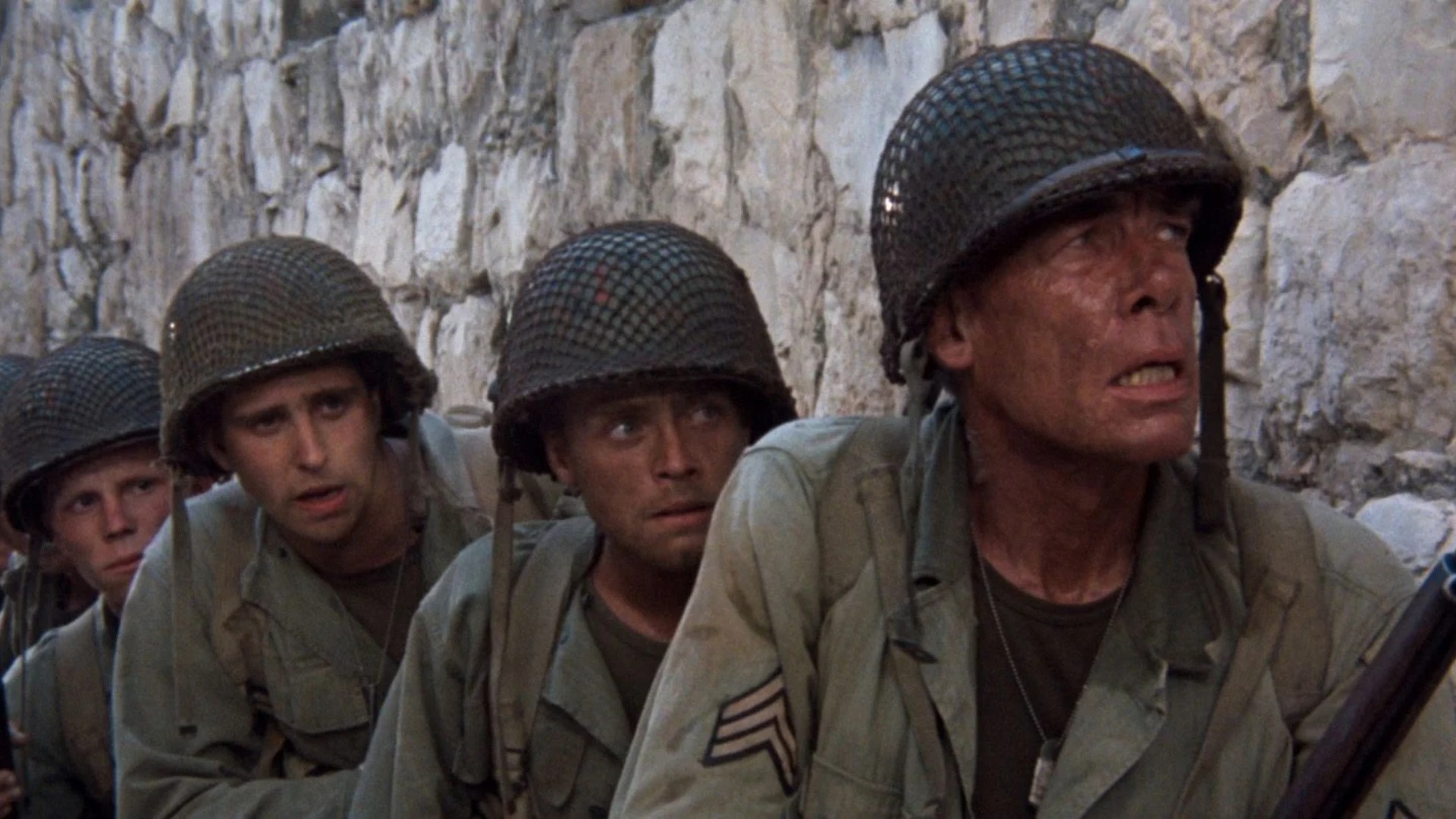
Sam Fuller’s epic has grown in esteem over the years. The original theatrical release – which stands at 116 minutes long – was a relative box-office hit and picked up decent reviews. However, since then, critics have come to adore the movie, partly thanks to Richard Schickel's extended cut, which brought the movie – using Fuller's production notes – to 160 minutes long. One particular extended scene stands out: there's a moment when the Horsemen are trapped in a Roman coliseum and are saved by the French Spahi Moroccan cavalry. The scene ends with the shocking sight of Moroccan Goums removing the ears of German cadavers. Gruesome.
29. The Great Escape (1963)
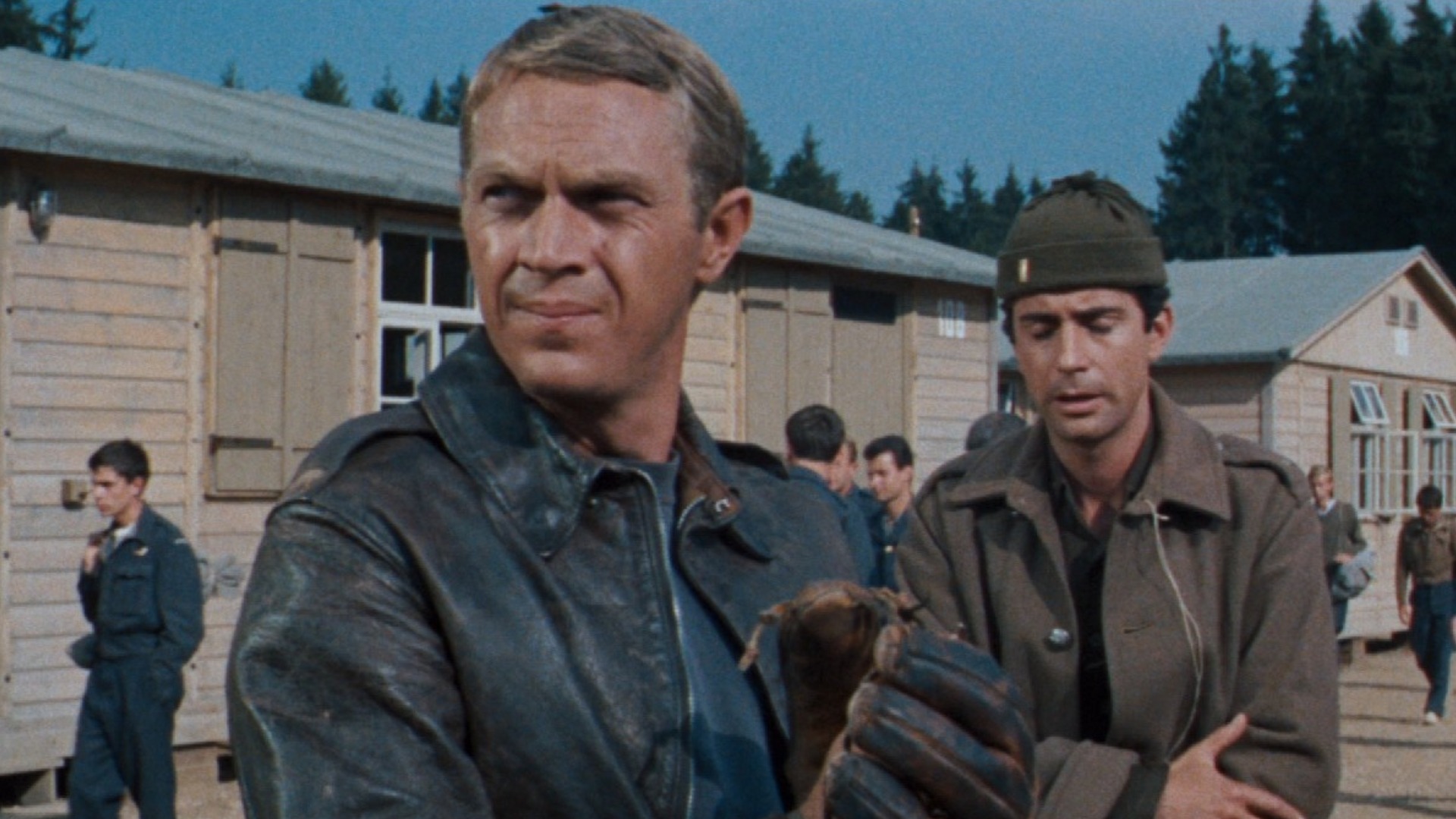
You know the theme. That uplifting ditty that's been drafted into so many movies and TV shows as a way to give authority the finger. But The Great Escape gave us much more than that. A fun, heart-warming adventure about a band of allied POWs during World War 2, who are recaptured by the Germans and sent to a high security Stalag in Poland. The movie's two leads, Steve McQueen and Richard Attenborough, rally together a hodgepodge of prisoners to dig three tunnels. The great thing is, nobody is under any illusions about getting home. So why do it? Simply: to piss off the Nazis. You've got to admire their balls.
28. Letters from Iwo Jima (2006)
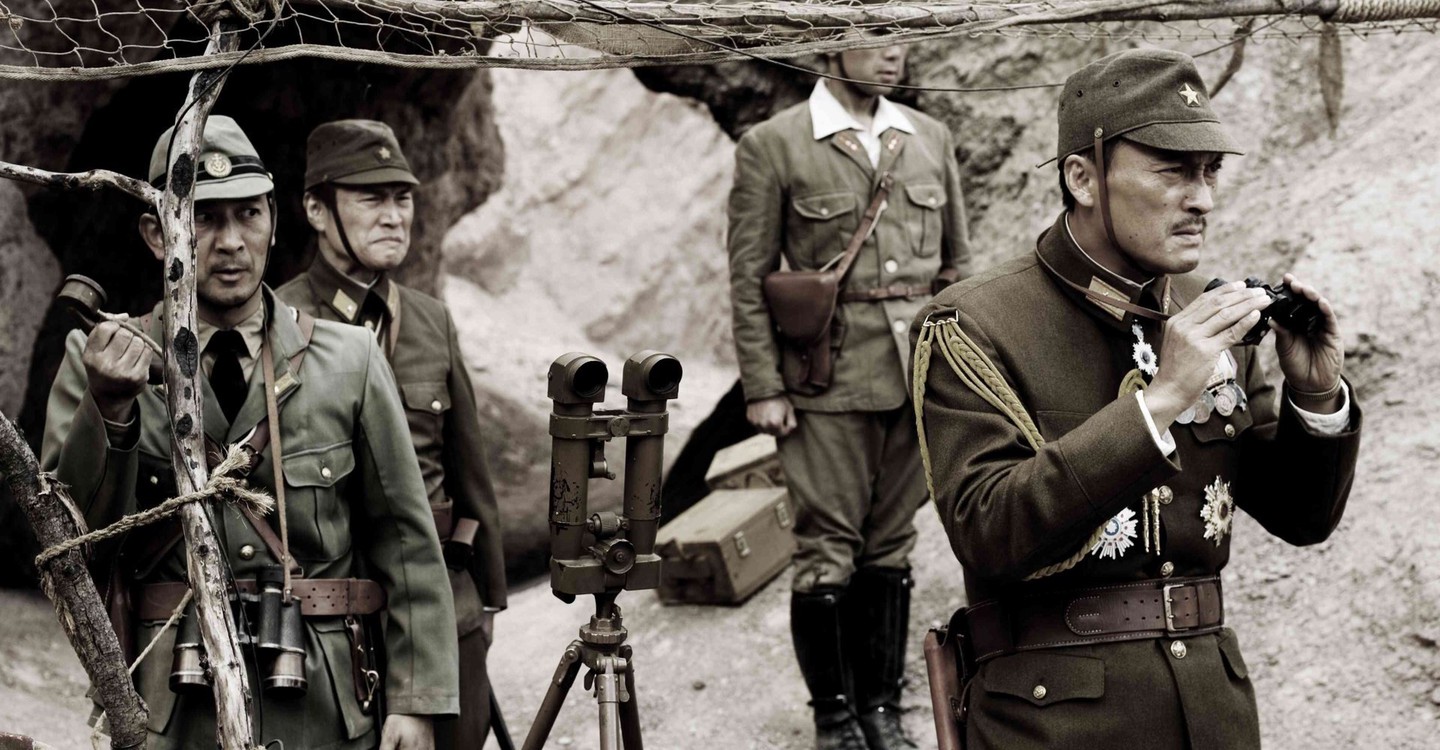
A more intimate, impressive picture than Clint Eastwood's companion piece, Flags Of Our Fathers, the Japanese-language Letters from Iwo Jima take looks at the battle for Iwo Jima. It's a more restrained, simpler depiction of men under duress, struggling to find some sense in a senseless situation: hope amid the hara-kiri. It’s a worthy and well-meant movie that picked up Best Foreign Film at the Golden Globes and showed just how diverse Eastwood's directing abilities are.
27. Good Morning Vietnam (1987)
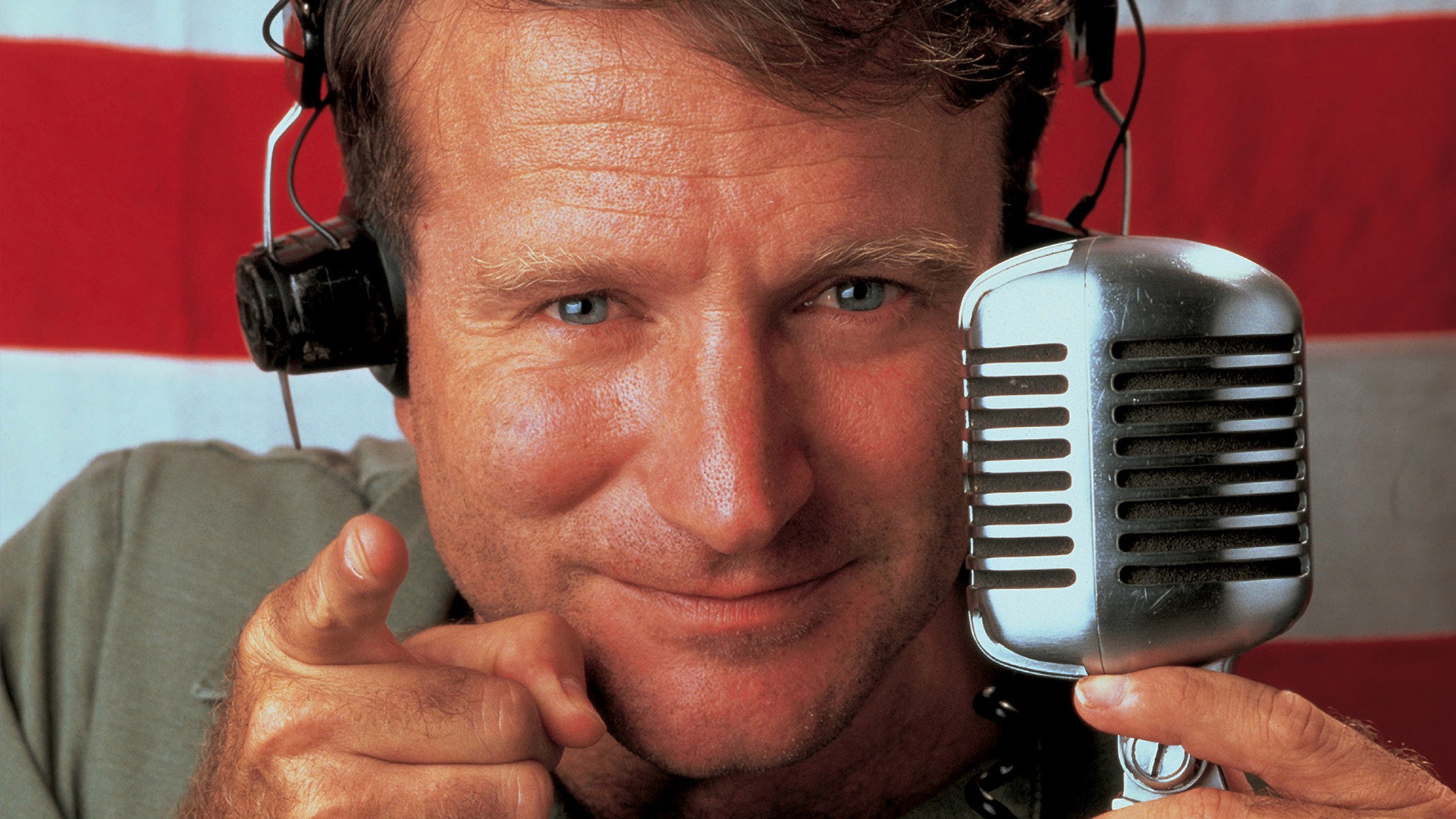
Few actors have careers as diverse as Robin Williams. The comic entertained everyone, from children to adults, and Good Morning Vietnam sees the Oscar-nominated actor at the height of his abilities. Williams plays Adrian Cronauer, a radio DJ for the America armed forces during the Vietnam War. Unfortunately, though, Cronauer's superiors grow more and more annoyed as he gains popularity thanks to his funny announcements and irreverent tone.
26. The Best Years Of Our Lives (1946)
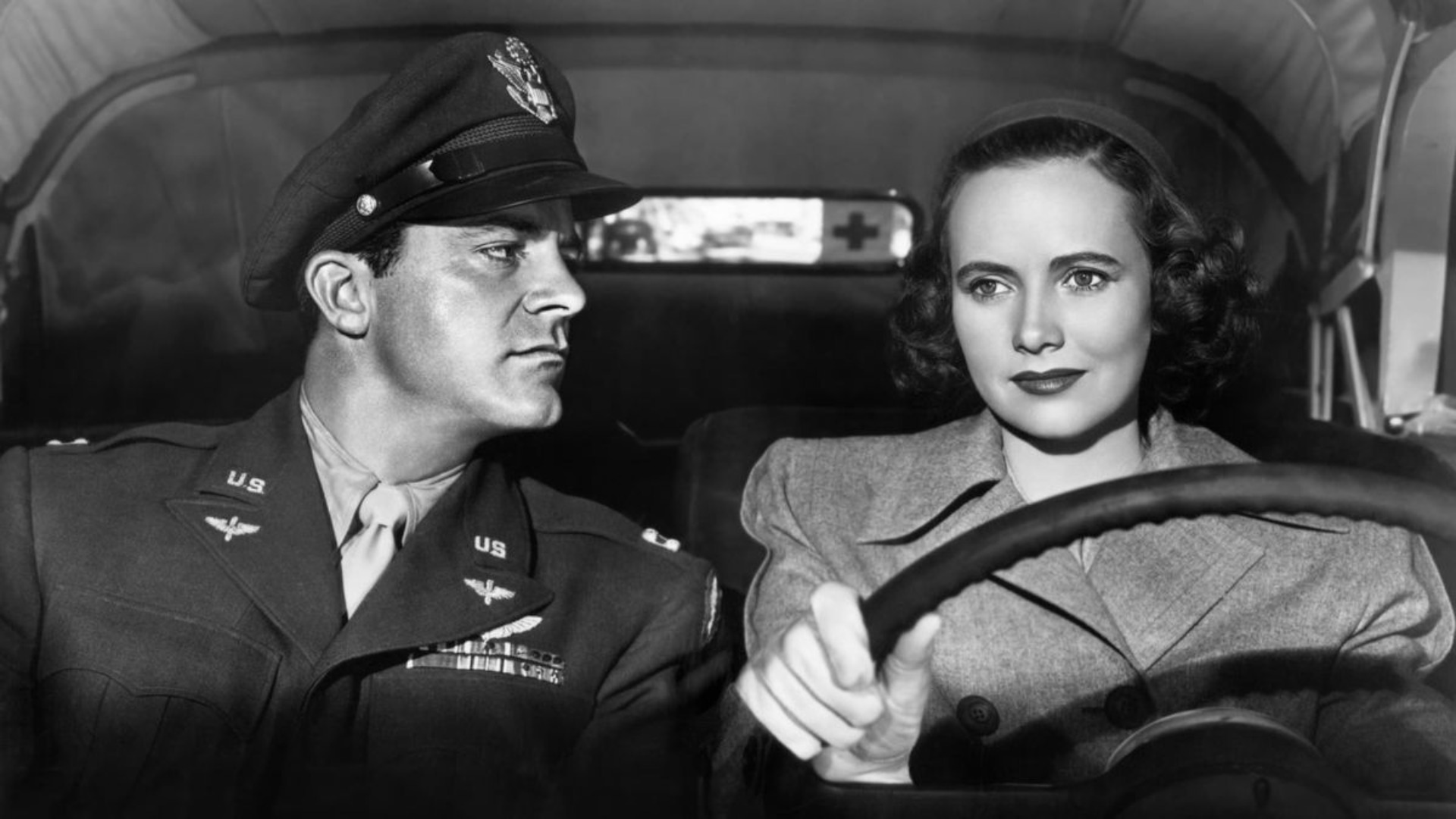
William Wyler was quick to release this following World War 2. The movie centres on a various American serviceman – primarily a captain played by Dana Andrews – re-adjusting to civilian life. They go through divorce and grow furious as those people back home fail to understand the trauma they have been through. Former war correspondent MacKinlay Kantor was hired to write the screenplay, which went on to pick up Best Adapted Screenplay at the Oscars. The movie itself won best picture.
Sign up for the Total Film Newsletter
Bringing all the latest movie news, features, and reviews to your inbox
25. Downfall (2004)
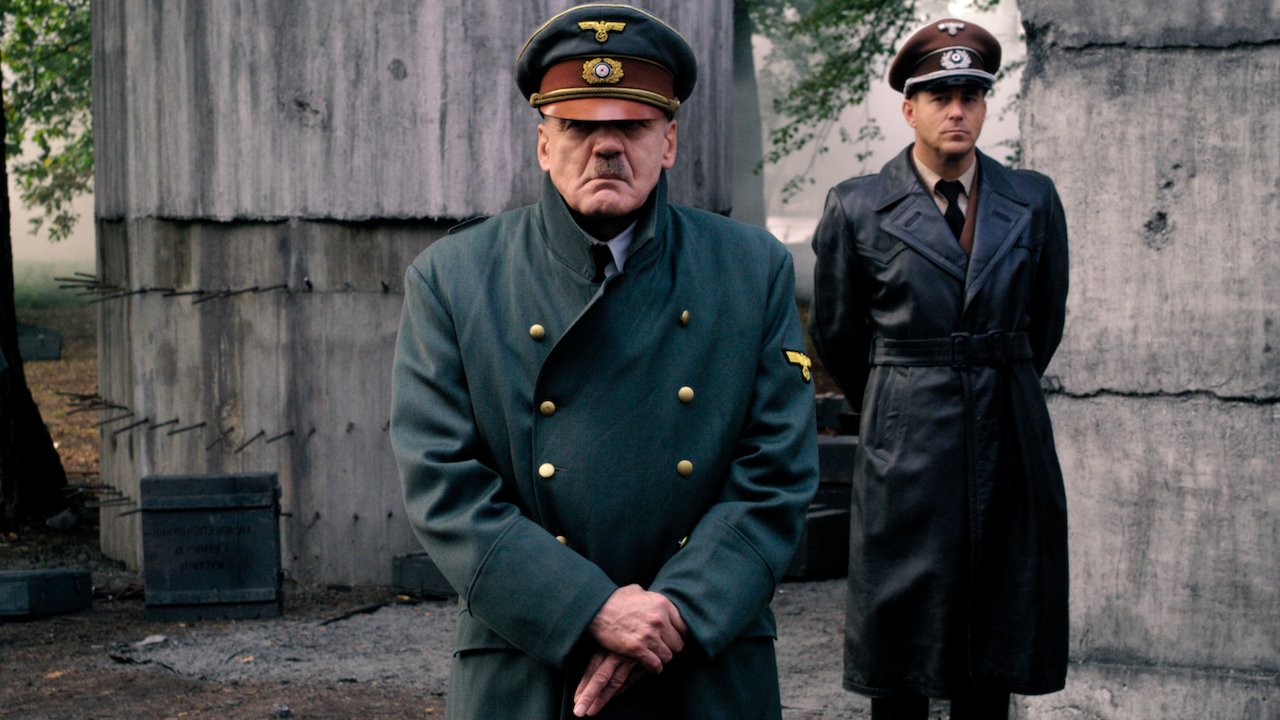
Humanising Hitler (while far from excusing him) makes his crimes all the greater. Downfall takes a fly-on-the-wall approach to the Fuhrer's final ten days, told through the point-of-view of his secretary. In fact, it's the real-life Traudi Junge whose voice is heard opening the movie. Much was made of how the film paints a realistic portrait of a monstrous man, who displayed kindness to his staff while seconds later utter contempt for millions he sent to their deaths. It's a near-perfect piece of filmmaking, thanks to Bruno Ganz eerily-precise depiction of Hitler.
24 Grave Of The Fireflies (1988)
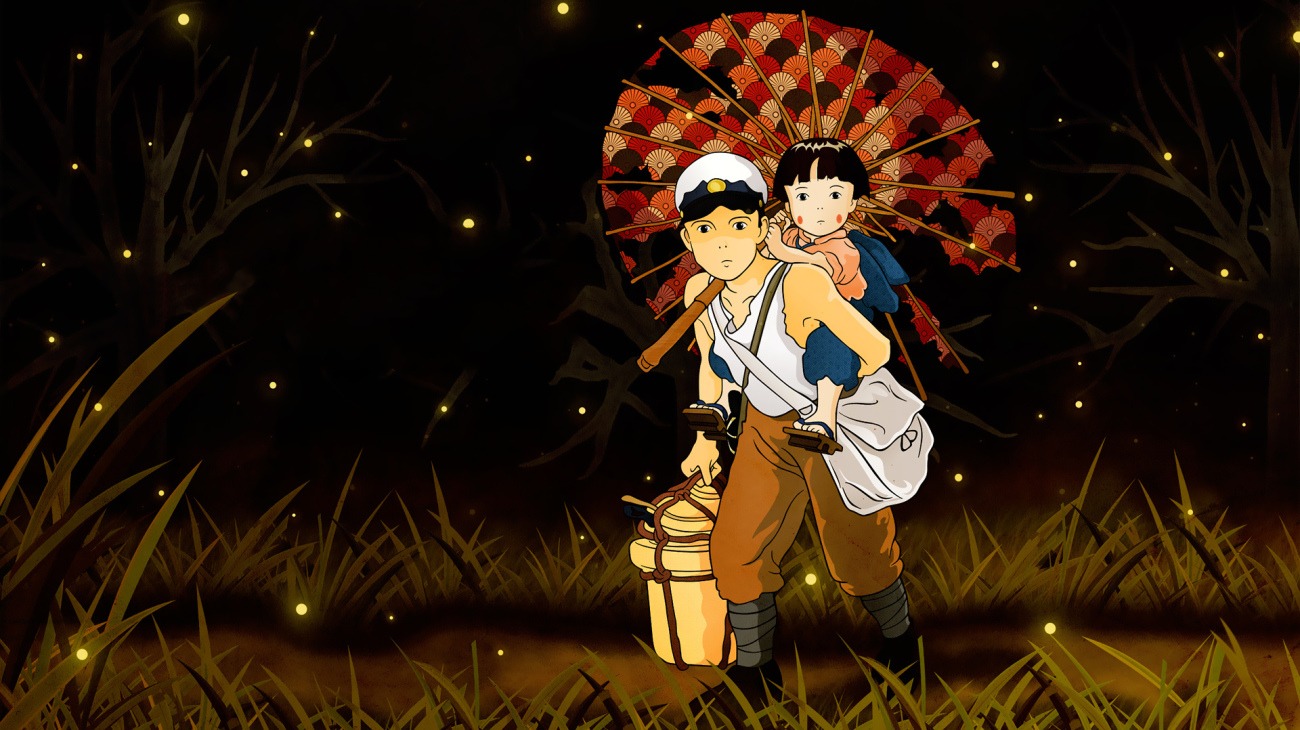
Studio Ghibli has a gift for transforming somewhat harsh subject matters into lush, playful movies. The Japanese animation house outdoes itself with this stunning story – a bleak reminder that it is often the children who suffer the most from warfare. The use of animation achieves a power that live-action probably wouldn't have matched, as the movie follows Seita and Setsuko, two kids orphaned after American bombers destroy their hometown. Heralded by many as one of the most moving anti-war films, it's a true tear-jerker from start to finish.
23. Dances With Wolves (1990)
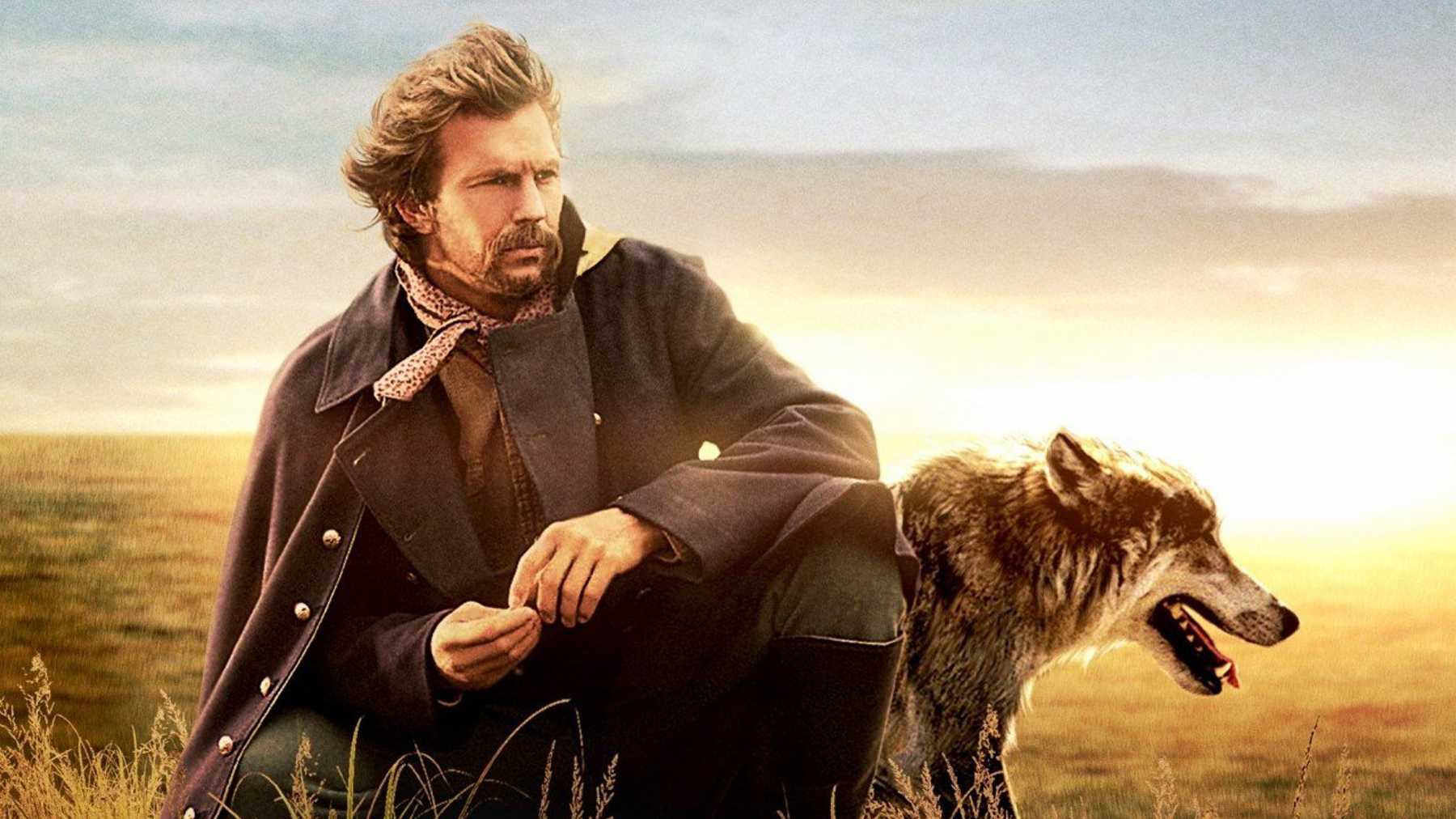
Dances With Wolves is peak Kevin Costner. The actor/director outdid himself with this war-set Western that takes place on the American frontier in 1863. Costner – also on directing duties – plays First Lieutenant John J. Dunbar, who is heavily wounded by the Confederates. Eventually, Dunbar has dealings with the Lakota, who eventually see him as a warrior on their side. Costner picked up Best Picture and Best Director wins at the Oscars for this epic.
22. Life Is Beautiful (1997)
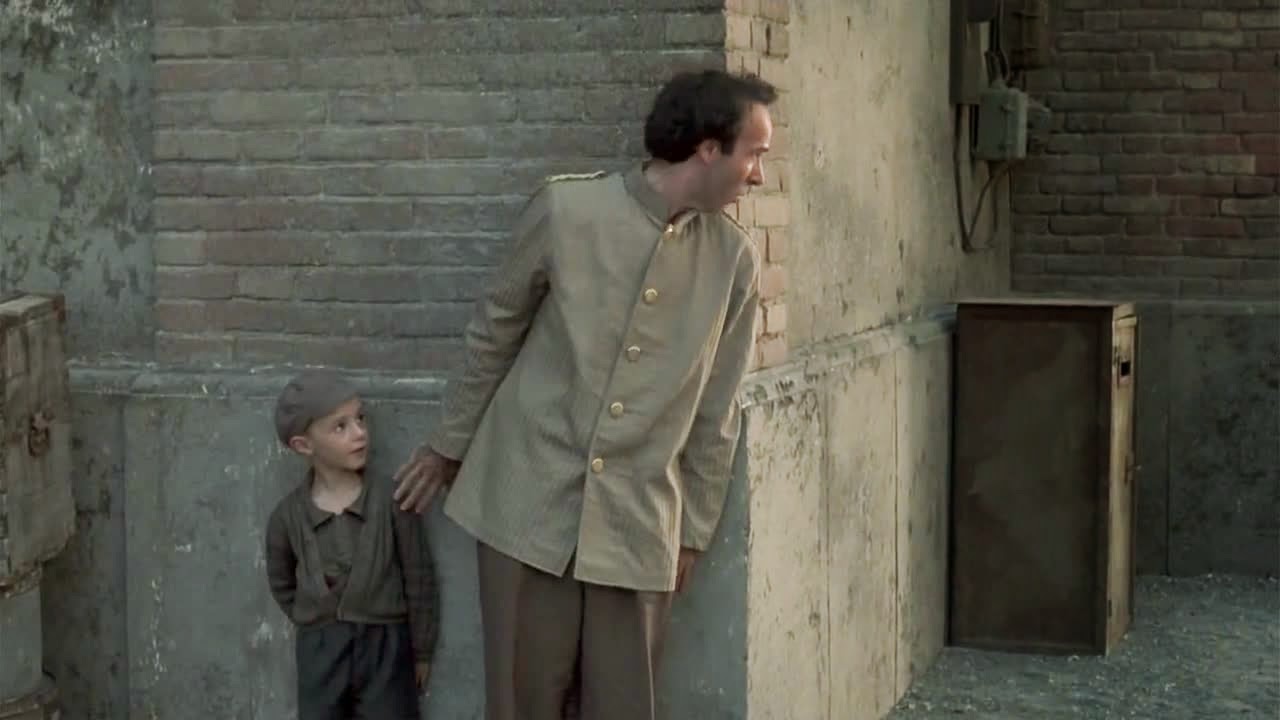
Roberto Benigni had a steady early career, but Life is Beautiful propelled him to international fame as the actor/director was nominated for almost every award imaginable. The moving picture centres on an Italien father and son who are taken to a concentration camp. Benigni's father does his utmost to hide the situation from his child, making fun of patrolling officers and sending messages to his wife in another camp. It's a truly heartbreaking watch and about finding the beauty in the worst of situations.
21. Come And See (1985)
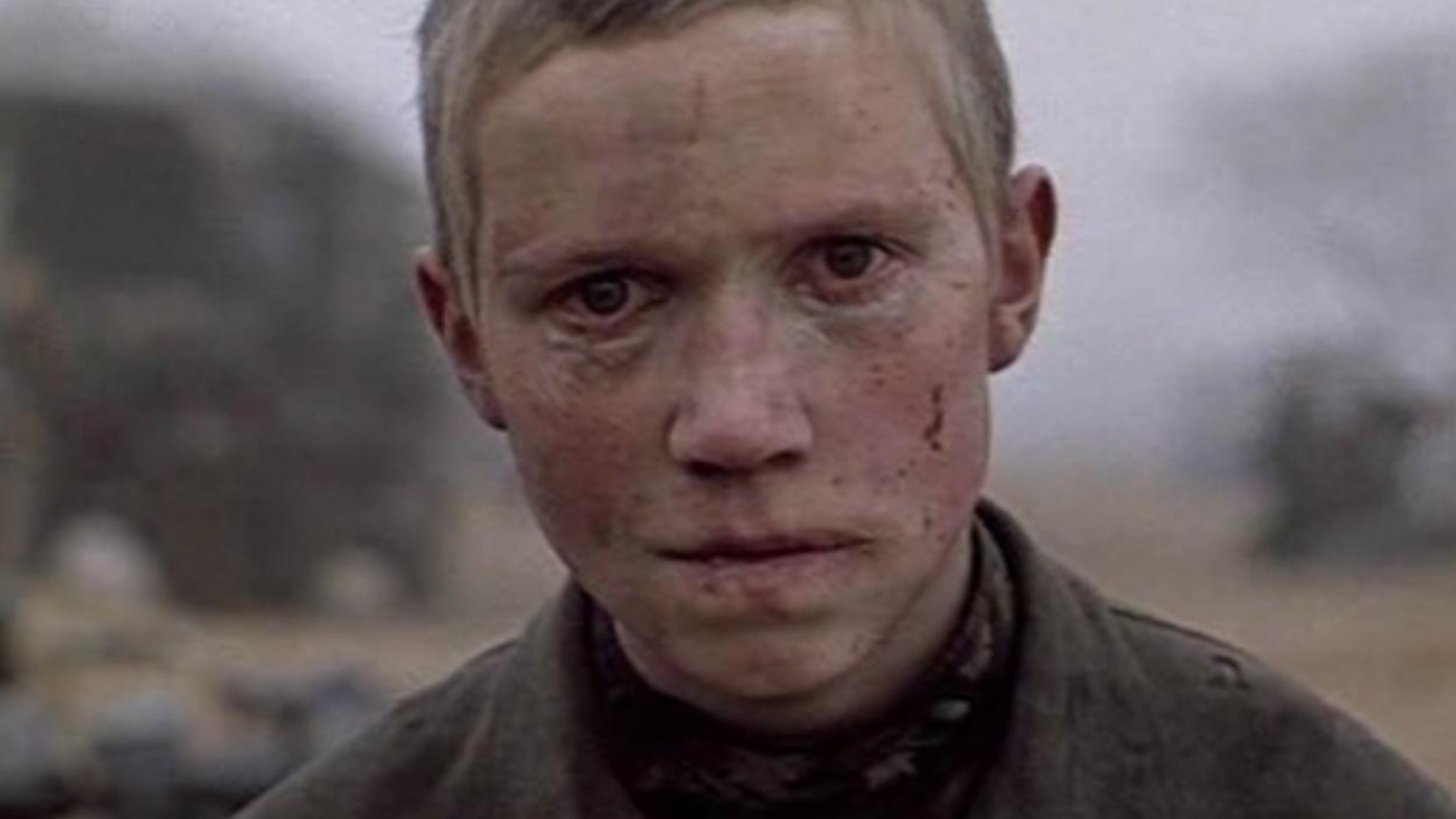
Some of the most horrific images shot by wartime correspondents include children. They're innocents, in the wrong place at the wrong time. It's that child's eye view of war which drives home the horrors of the Nazi-occupied Soviet Republic in Come and See. Inspired by the experiences of a survivor, the movie follows young lad Florya (Aleksey Kravchenko) as he's lured away from his family to help fight the Resistance. It's only when he attempts to return home that he witnesses the hallucinatory terrors implied by the title (e.g. villagers herded into a church, into which grenades are then thrown). Hard-hitting in its unflinching approach to the material, there's no stone left unturned when it comes to the atrocities the Nazis committed in Belarus.
20. Son of Saul (2015)
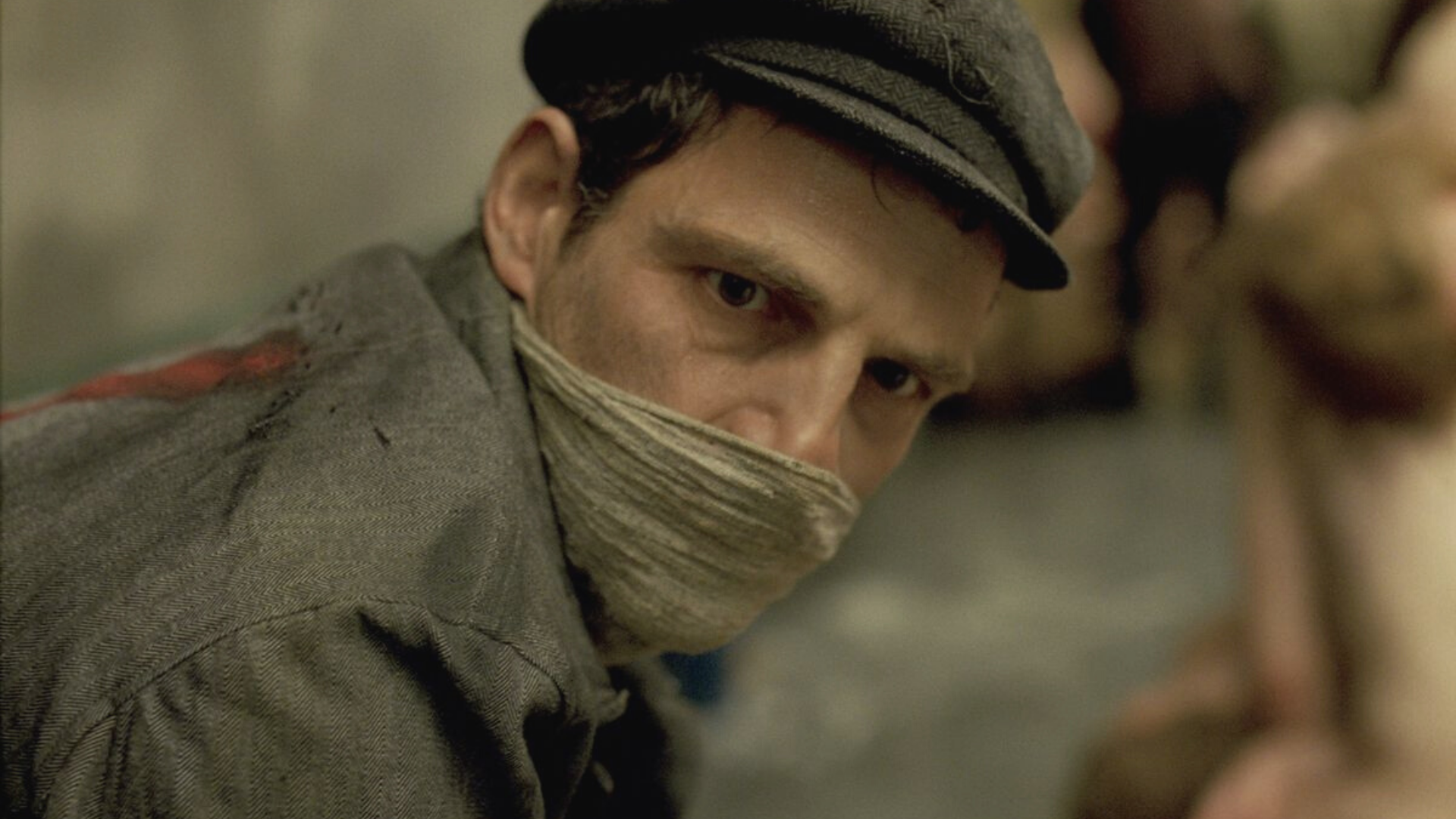
László Nemes' Son of Saul is one of the more modern movies on this list. The camera never strays from leading character Saul Ausländer, played with wonderful pathos by Géza Röhrig, as he searches for his son in a concentration camp. The horrors of the Auschwitz concentration camp are vivid, disturbing, and upsetting. Indeed, watching Son of Saul makes for a draining yet necessary experience. No wonder, then, that it won Best Foreign Language Film at the Oscars.
19. Dunkirk (2017)
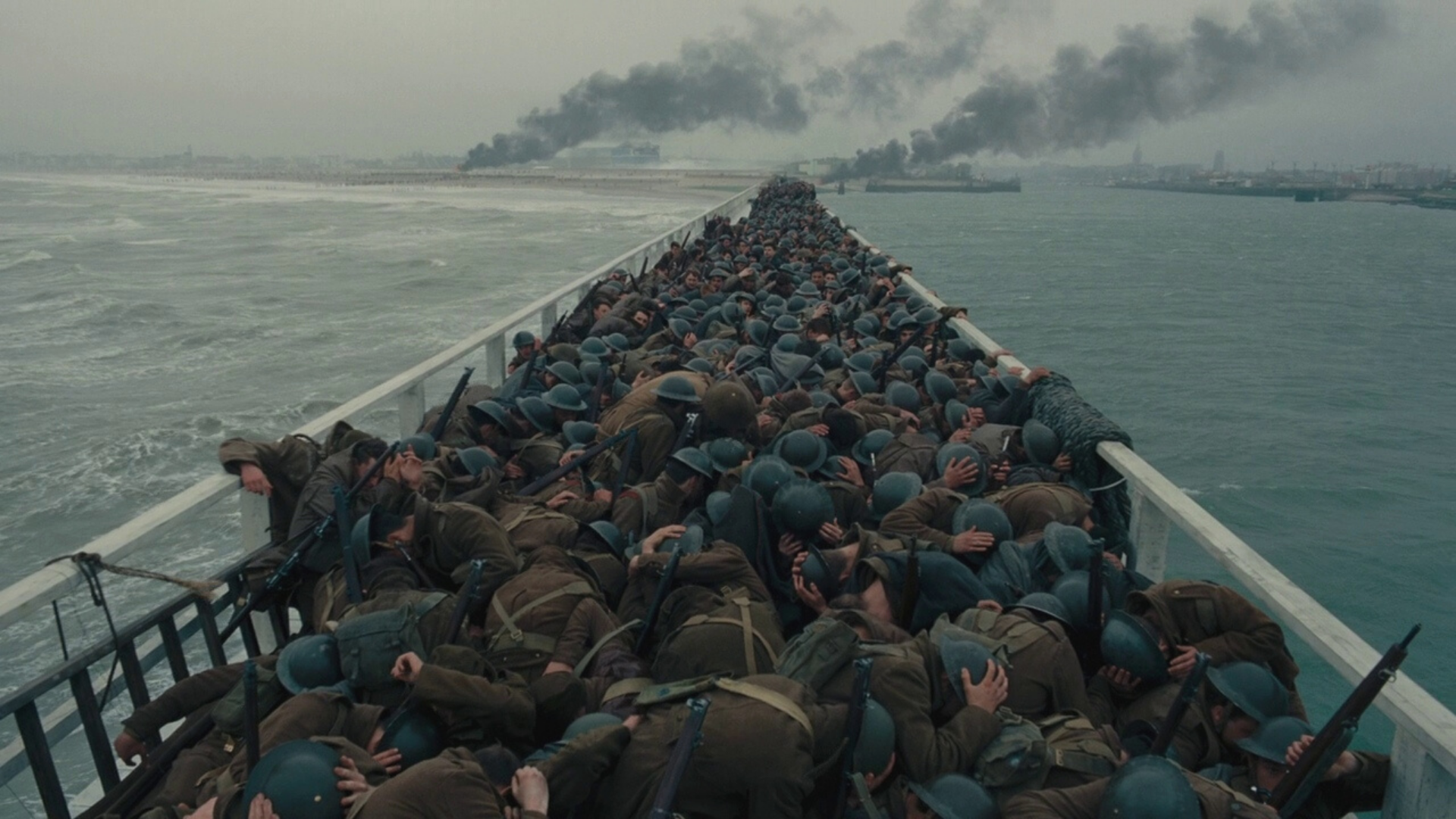
What makes Dunkirk such a great war movie? It's probably the sound. While the pacing ais Christopher Nolan at his peak, the acting performances are excellent, and the visual effects superb, it's the sound that really takes your breath away. When all the soldiers are taking cover on the beach, for example, it's an incredible contrast between the chaos of the dropped bombs, and the eerie silence of the troops all standing up and reforming their queues. The spitfire engines? Visceral. The sound of water rushing into various boats as they sink, accompanied by the screams of drowning men? Chilling. Dunkirk isn't a thrilling war movie, or the most didactic, but the way it uses sound (or the notable absence of it) to create the menace and horror of each scene is second to none.
18. Das Boot (1981)
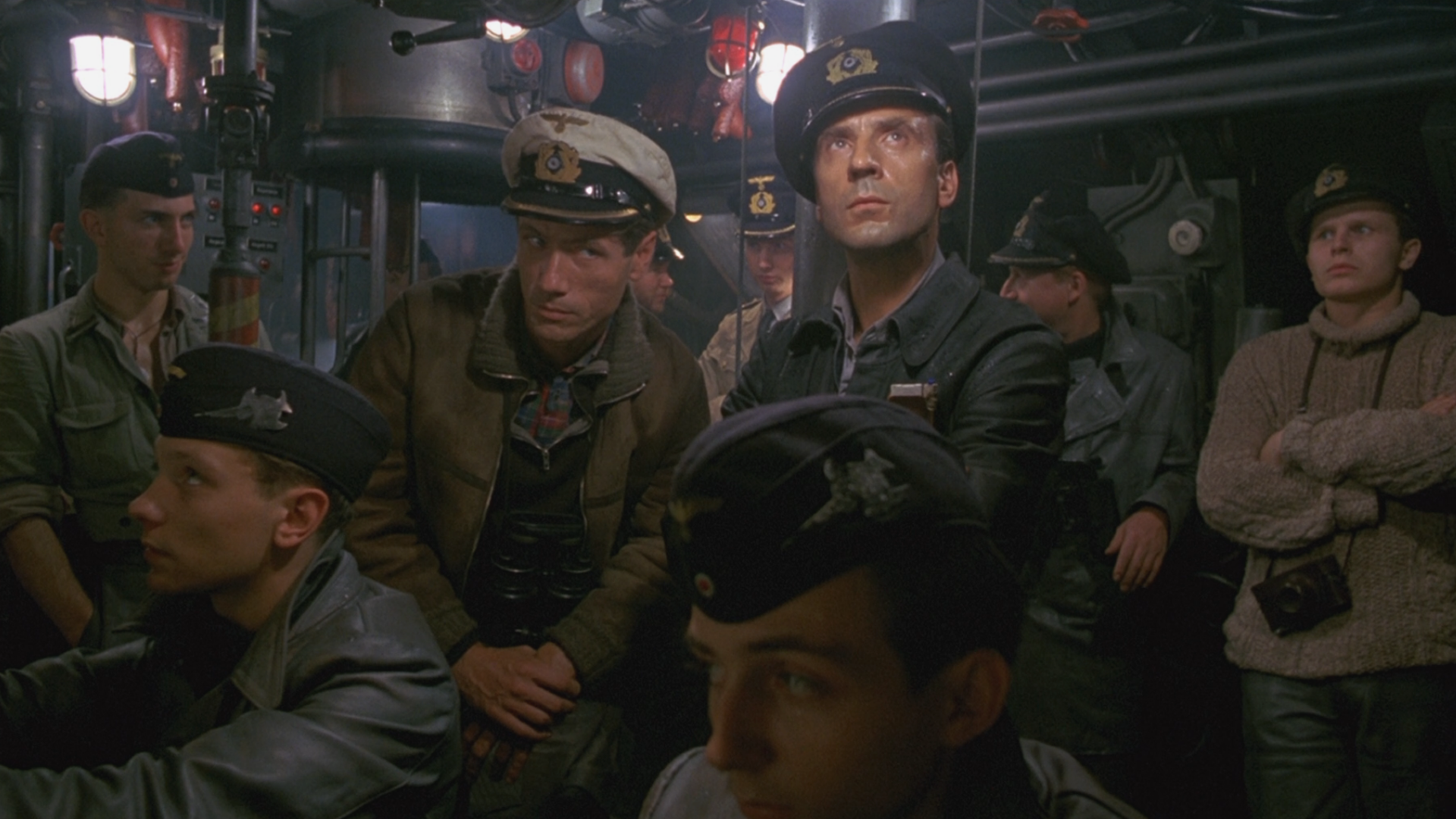
Wolfgang Petersen's film is one of a few examples where the term 'epic' can be used with authority. Das Boot runs just a shade under five hours. It's had trimmed theatrical releases, TV miniseries cuts, and extended home video director's edits: all of them pack the same thudding truth. War is hell wherever you are. Here, hell's aboard submarine of German sailors facing boredom, claustrophobia, and terror under the waves. That terror is boldly presented, as the crew, bound by orders not to take prisoners, torpedo a British tanker. Bleak.
17. The Hurt locker (2008)
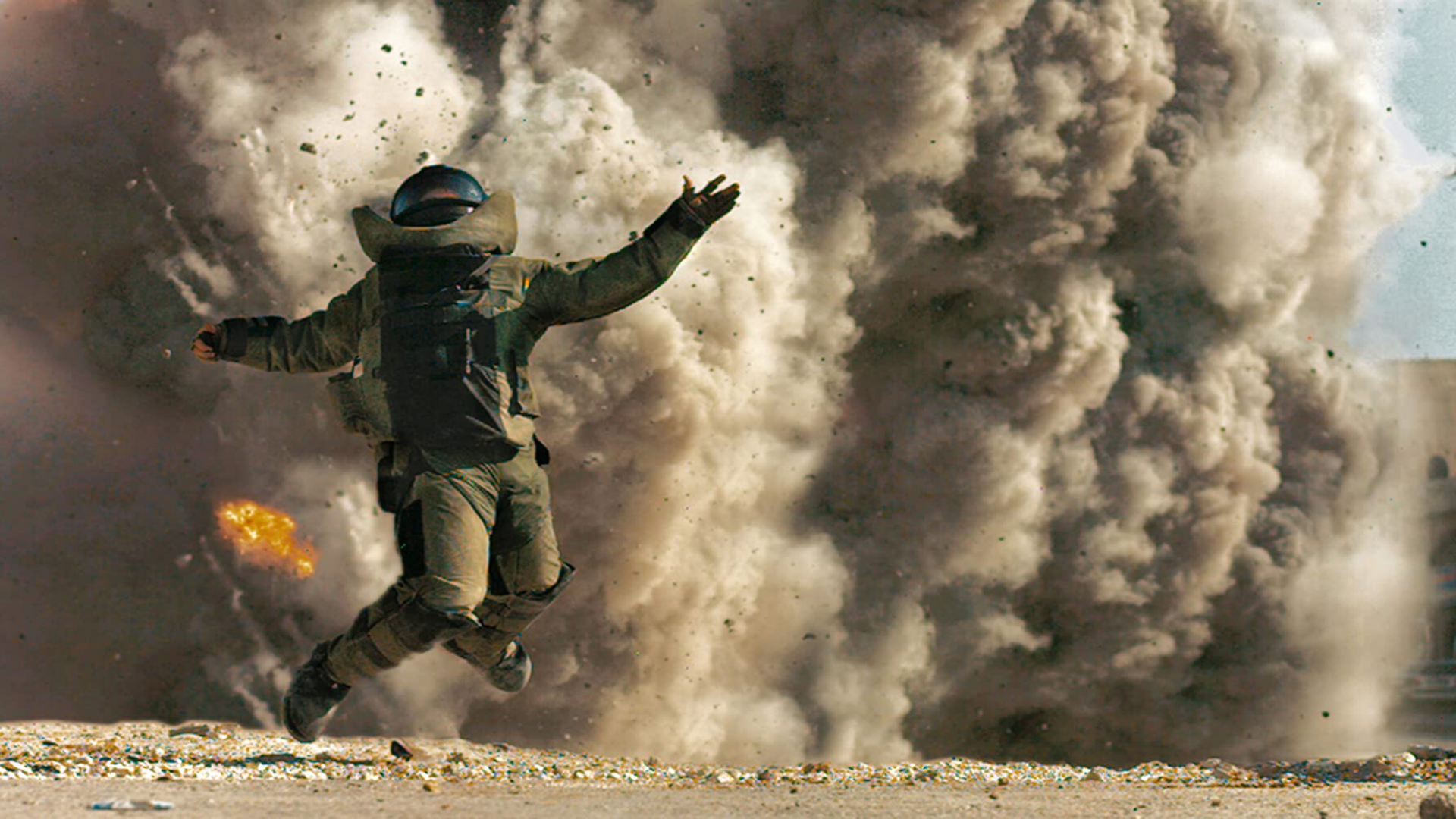
Before he became the Avengers' archer Hawkeye, Jeremy Renner took on the role of a conflict vet, tasked with leading an explosive ordnance disposal team in Iraq. Not the most tantalising job offer, but that's the pull of Kathryn Bigelow's Oscar-winner. Despite the constant danger, for guys like Sergeant First Class William James, war is a drug. He's content in the thick of it. Even when he ventures way off task, getting both he and his squad into horrible scenarios (discovering children surgically implanted with bombs), there's a sense that he's exactly where he wants to be. This is a bracing and honest look at what war does to soldiers.
16. All Quiet On the Western Front (1930)
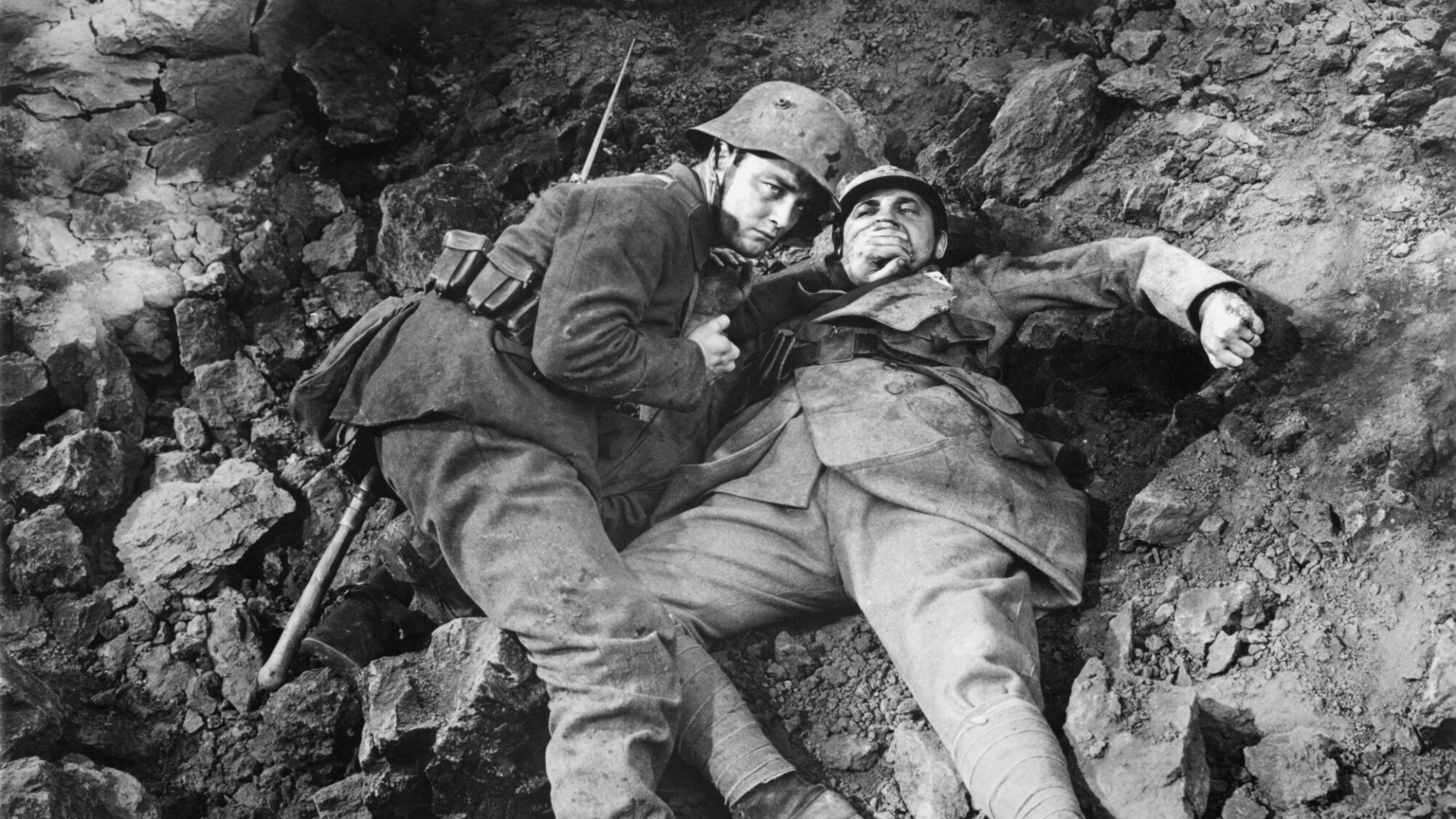
Boredom, hunger, and the ever-present threat of sudden death transform an episodic story into Hollywood's definitive account of trench warfare. The original film from 1930 is the role for which actor Lew Ayers is best known, as German soldier Paul Bumer. One of several schoolboys convinced by their patriotic schoolteacher to enlist in the army, he and his friends come to learn that doing your bit for your country means sacrificing everything.
15. The Bridge on the River Kwai (1957)
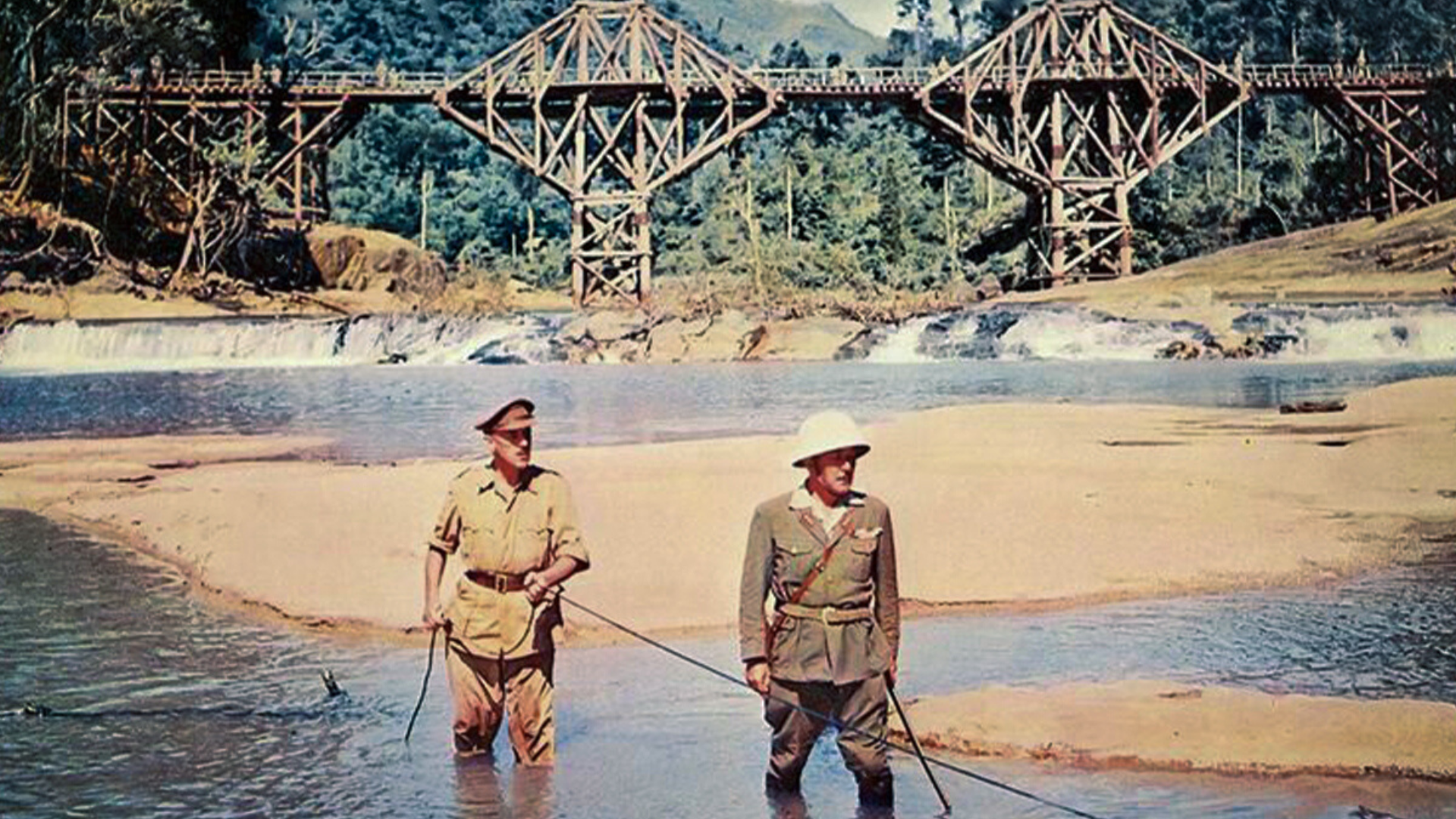
Regarded as one of the finest World War 2 movies ever made, Bridge on the River Kwai is the fictional story of the construction of the Burma railway. Alec Guinness stars as a British Colonel who, along with his platoon of men, is forced by the Japanese to construct the bridge. But the Colonel's alliances become unclear as he collaborates with his enforcers, believing the British Army should be remembered for its sterling construction work. A strange turn of events, certainly, and one that's brought to a head by William Holden's American officer who swoops in to try and blow up the bridge. Heart-wrenching stuff.
14. Platoon (1986)
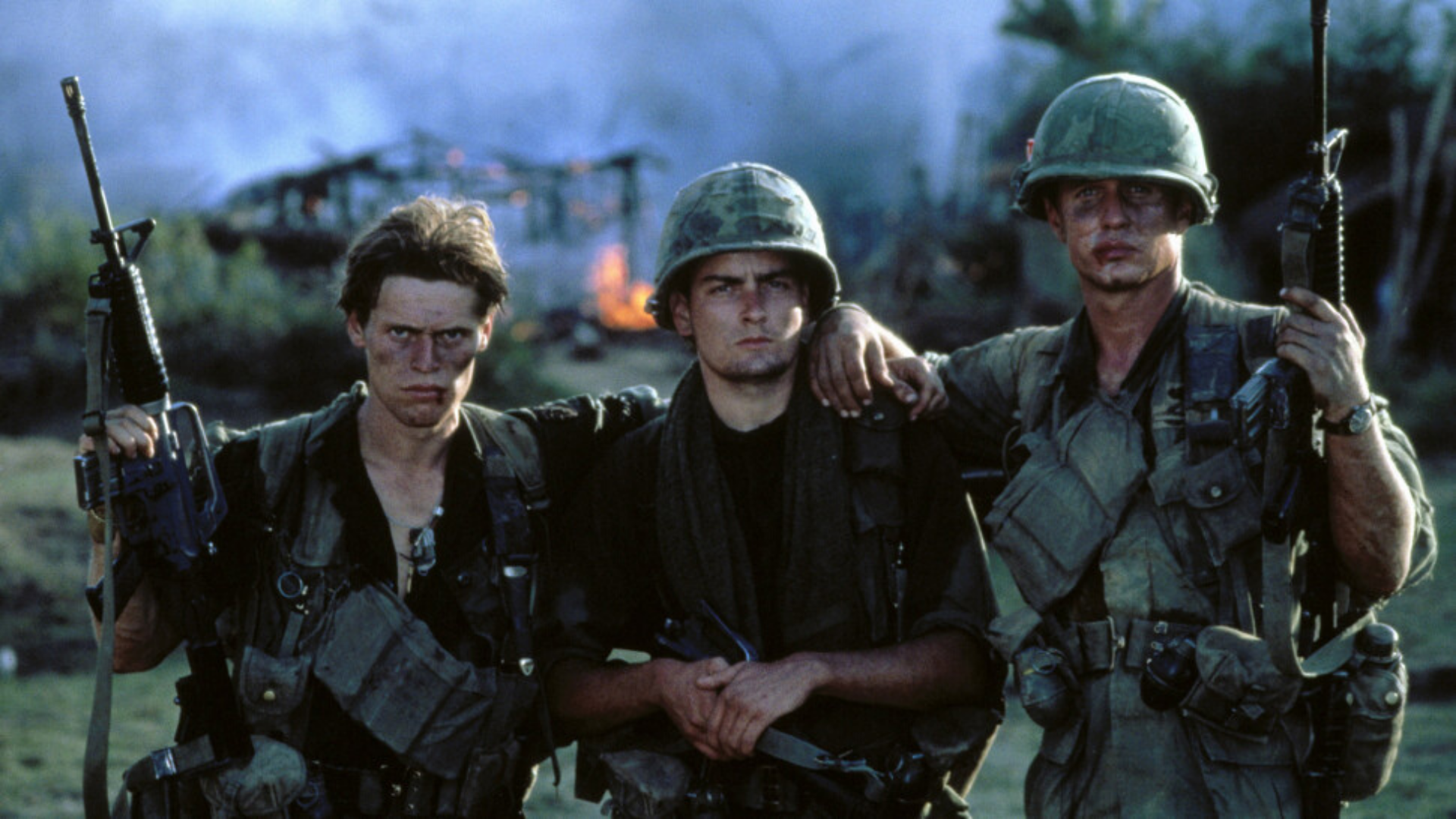
Platoon comes with an added boost of authenticity as writer-director Oliver Stone lived through the horrors of the Vietnam war. Stone was part of the US infantry for 14 months, channelling his experiences into his ensemble flick that follows Charlie Sheen's character as he jacks in his studies to serve his country. It's believed that this is the first Vietnam film to hail directly from someone who saw action. Stone knew himself how conflict rocks the psyche. Likewise, the squalor of jungle warfare has rarely been more palpable, but Stone puts things in perspective in a gruelling scorched earth raid on a Vietnamese village.
13. Casablanca (1942)
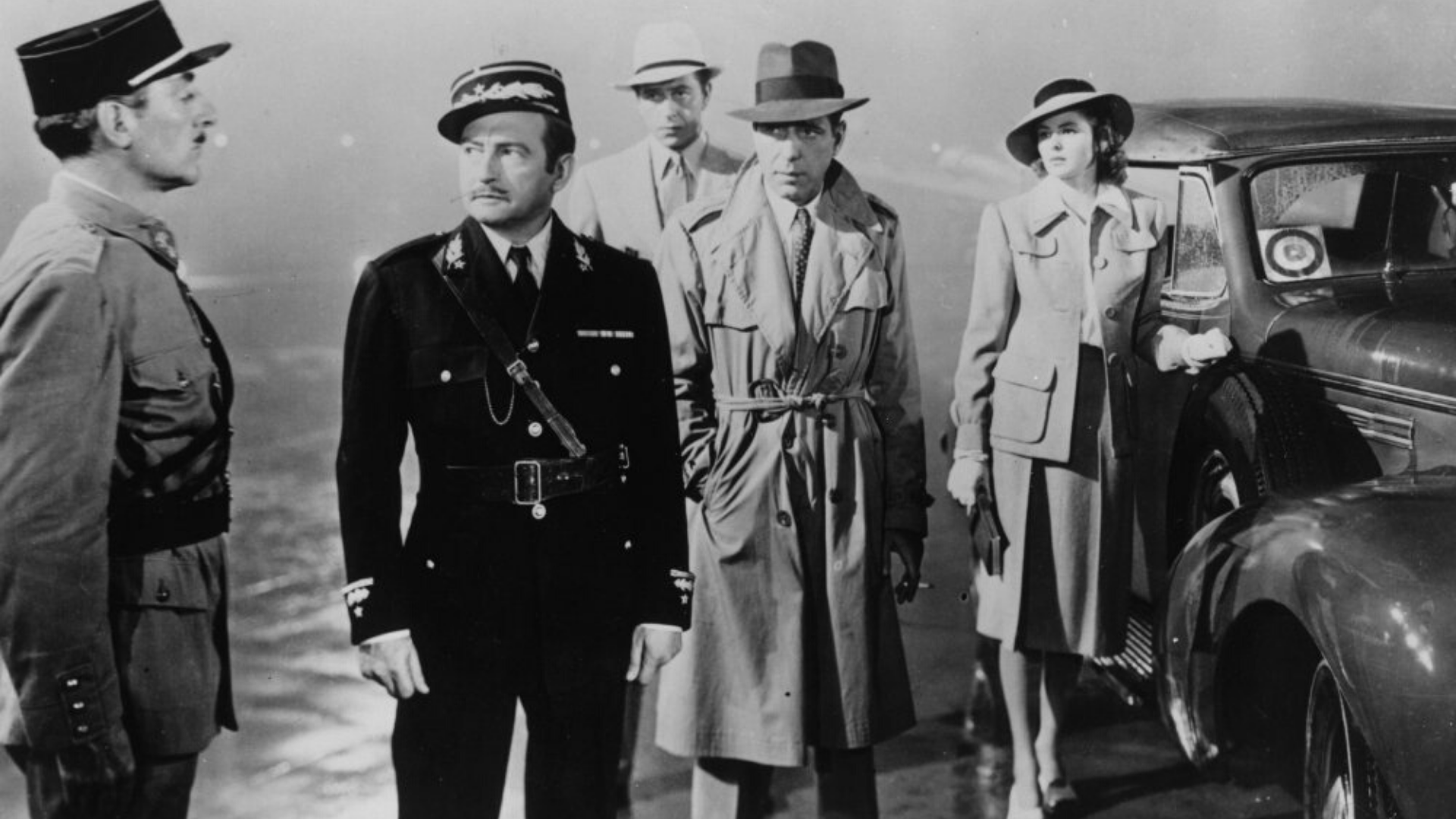
Hollywood's definitive wartime propaganda pic blends together the melodrama of lovers who can't be together with the harsh reality of conflict. Michael Curtiz's World War 2 actioner has two top-of-their-game actors in the lead roles, Humphrey Bogart and Ingrid Bergman, as Rick and Ilsa. Rick's a bartender in Casablanca, Ilsa's an old flame in town with her new husband, a notorious rebel who's out to bring down the Nazis. The great source of tension between them stems from Rick, who can't stand idly by when he has the power to help Ilsa's man. Chemistry like theirs that's rarely seen onscreen nowadays, a result of their off-set friendship, which also gave the film its most memorable one-liner. Casablanca is the wartime romance to end 'em all.
12. Ran (1985)
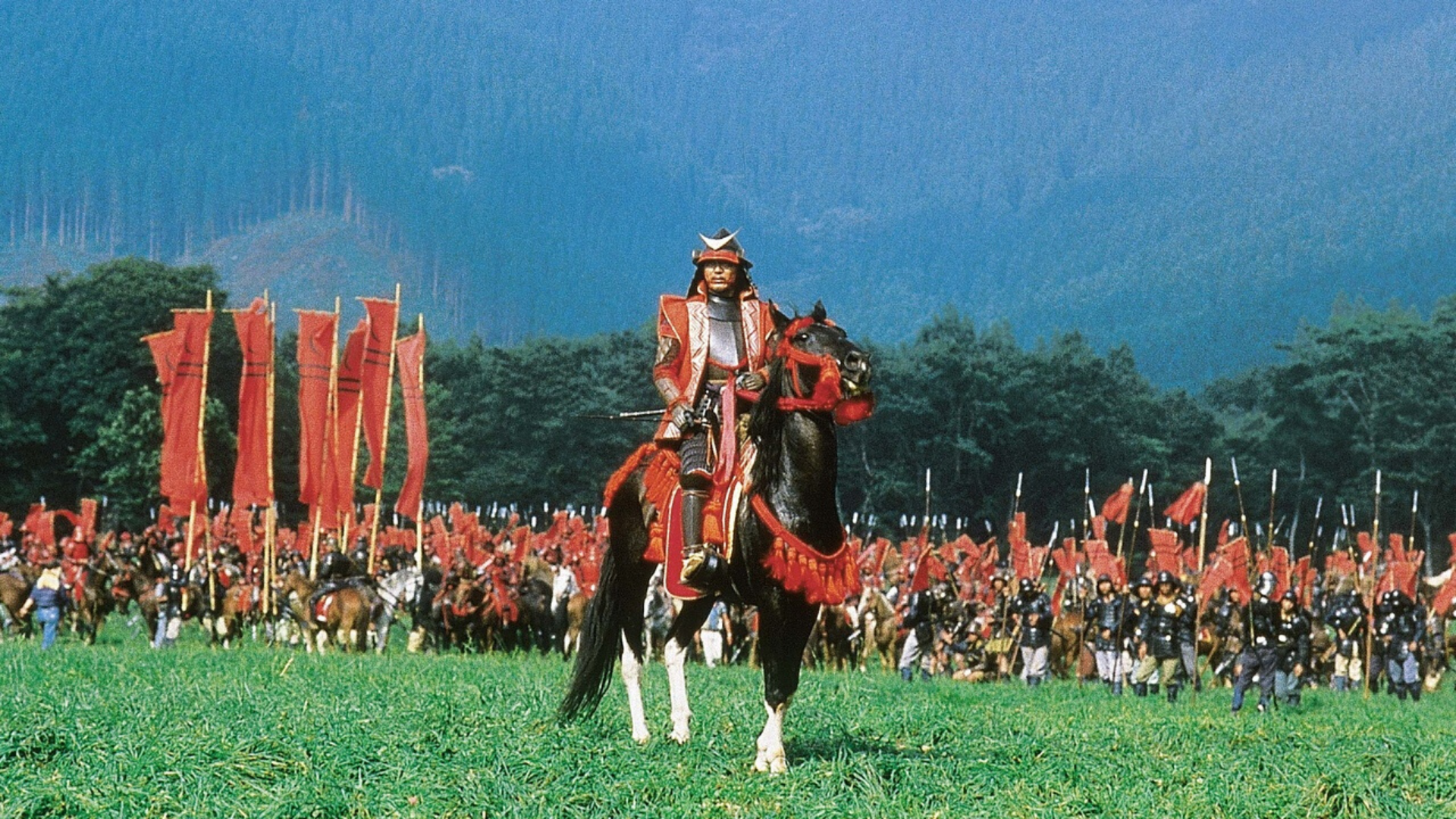
Based loosely on Shakespeare’s King Lear, Akira Kurosawa's last great epic was the most expensive Japanese film of its time and tells the spectacular story of a warlord’s decision to divide his kingdom among his children. At age 75, Kurosowa produced something of immeasurable power, and in his persistent perfectionism, built an entire castle only to burn it down in the memorable silent battle scene. The film's title translates to “chaos” or “turmoil” and it’s no surprise when the viewer witnesses Hidetora (Tatsya Nakadai) raging. Ran is more than worthy of its place on this list, and a landmark of Japanese cinema.
11. Schindler's List (1993)
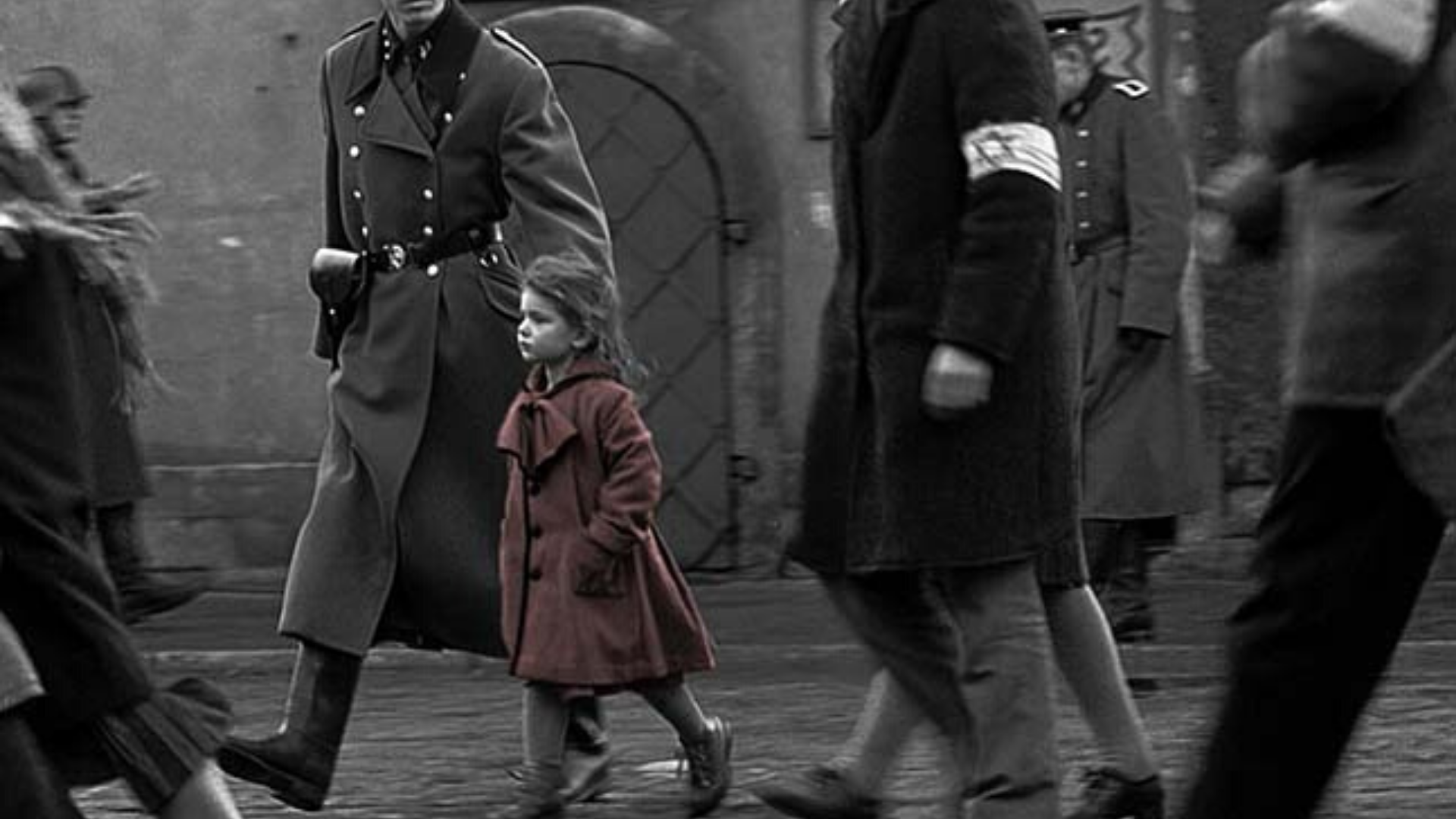
Steven Spielberg received a bit of a critical mauling for ignoring the entire six million who lost their lives in the Holocaust, but this movie still remains heart-wrenching, tear-jerking stuff. His effort to zero in on 1000 or so fortunate survivors, as a way to highlight the larger tragedy, nevertheless works. He brings his Spielbergian touch to a story that's about the dichotomy of man: within us all is the power to unspeakable acts of evil alongside the power to do untold acts of kindness. The story is based on the efforts of one Oskar Schindler – played here by Liam Neeson – a man who chose to help as many Jews as possible through his business endeavours, proving that in our darkest hours, there is light.
10. Lawrence of Arabia (1962)
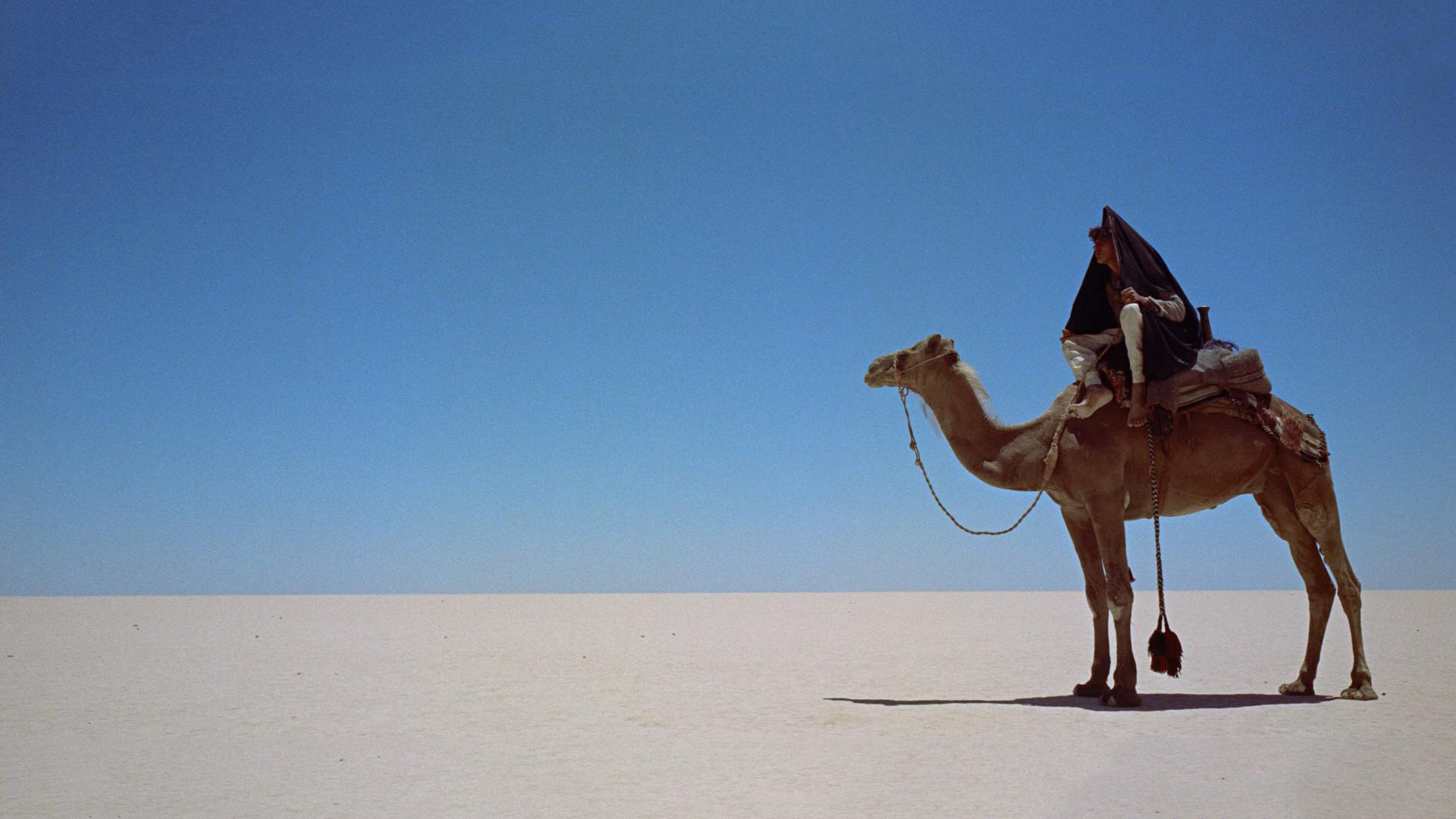
David Lean's second movie on here – and perhaps his greatest epic. Lawrence of Arabia follows the eponymous Colonel as he leads the Arabs in revolt during the First World War. Legendary actor Peter O'Toole plays Lawrence with an occasional whimsy but pulls emotional punches when needed. The cinematography, meanwhile, is stunning; every scene is utterly mesmerising as the expansive desert is shown in all its glory. Then there's the editing. Though well over three hours long, Anne V. Coates seamless style won her an Oscar. The movie's most famous cut gave birth to what's today known as "the match cut".
9. A Matter Of Life And Death (1946)
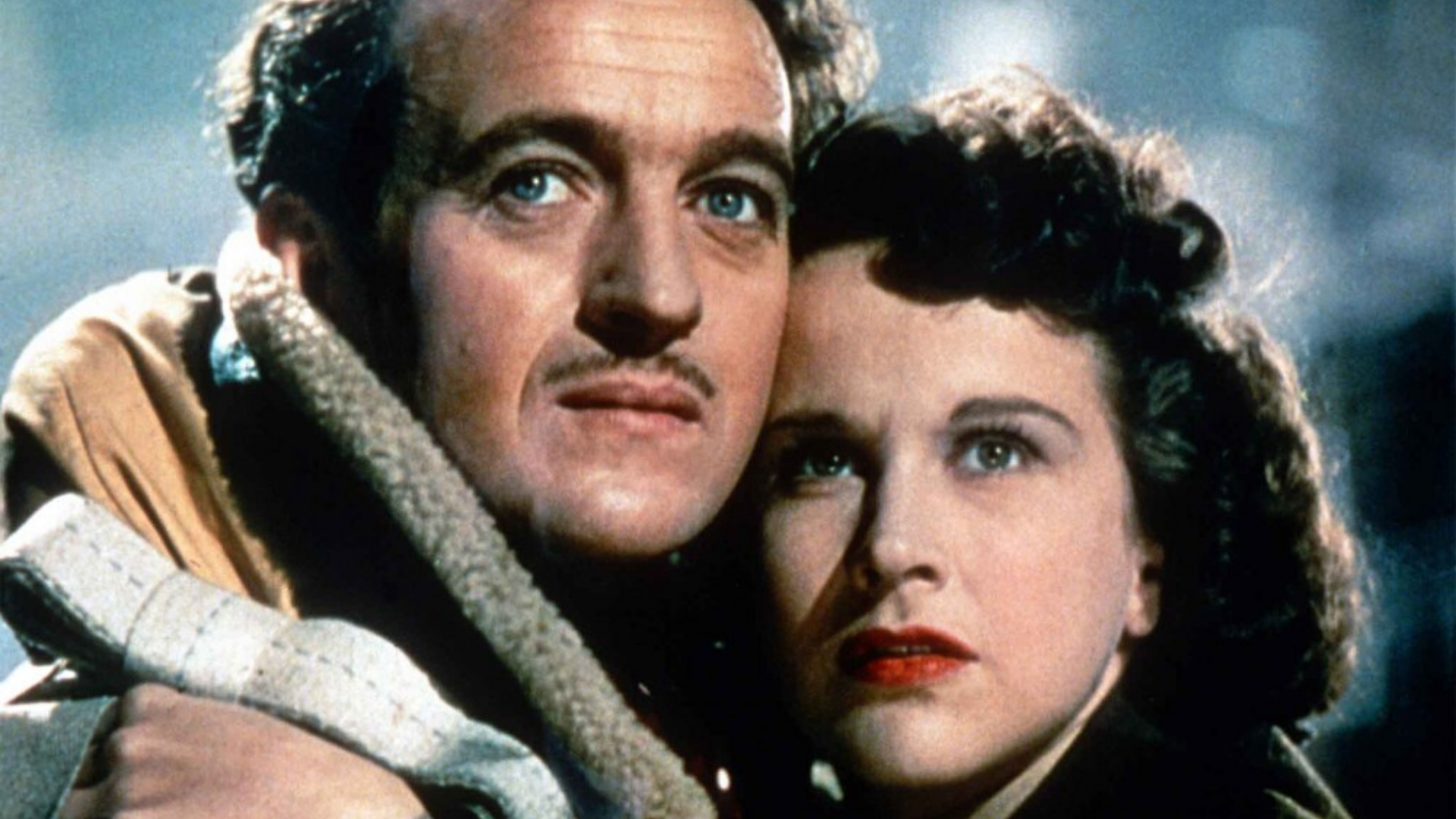
Powell and Pressburger's take on World War 2 remains entirely unique today. The British movie takes place between two worlds, with the afterlife filmed in black and white – the opposite to The Wizard of Oz. The movie follows David Niven squadron leader who, on the journey back from a mission over Germany, is left piloting a damaged Lancaster bomber without a parachute. He decides to jump out the plane, yes does not die – his escort to the afterlife misses him in the fog of the English Channel. The result is a charming fantastical adventure with a heartfelt message.
8. The Deer Hunter (1978)
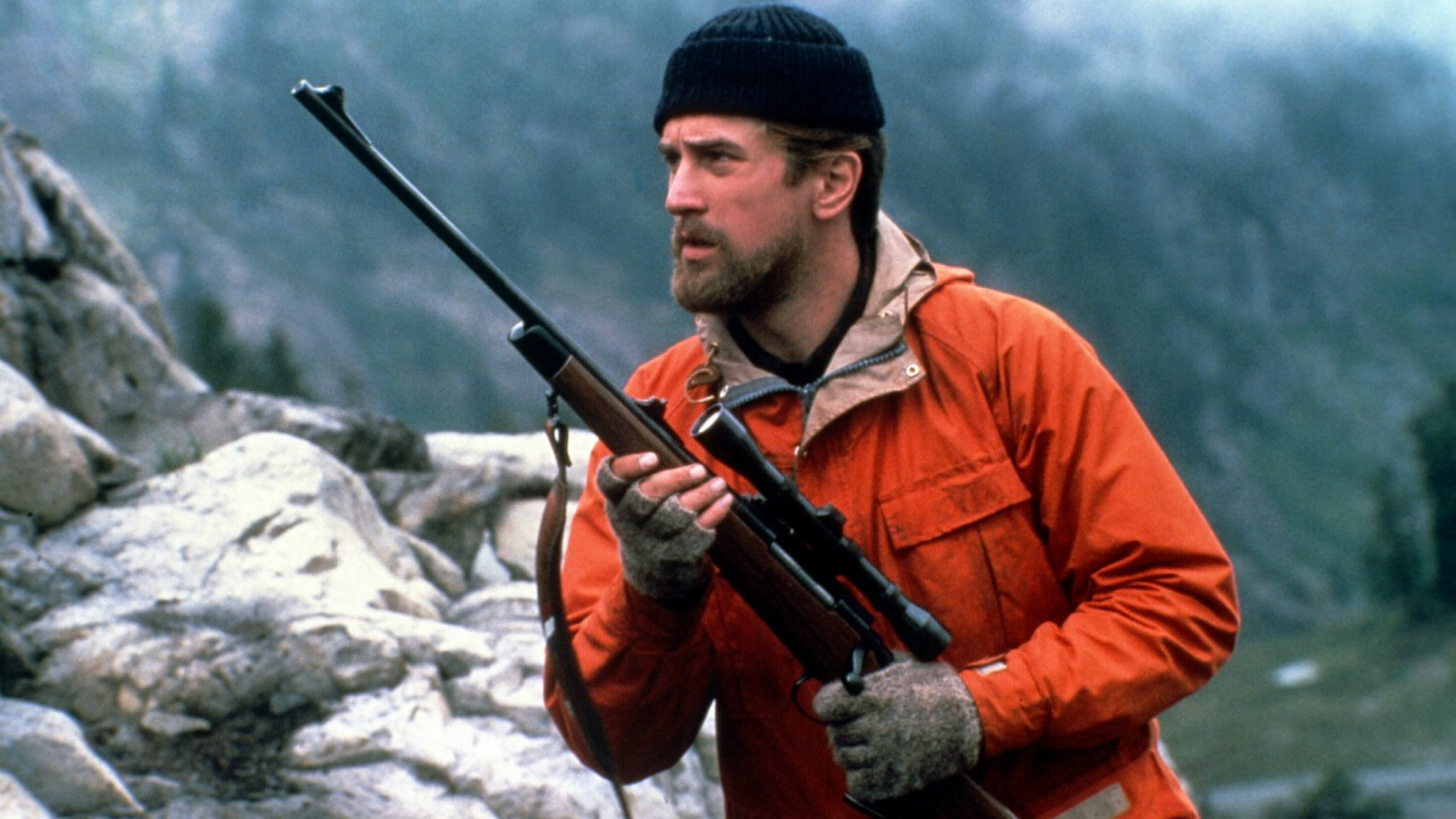
The Russian roulette scene is perhaps what Michael Cimino's Vietnam drama is best known for – a moment that epitomises the utter hopelessness of a man torn apart emotionally by his tour of Vietnam. He's one of three childhood friends, who sign up to serve their country. By focusing as much on the buddies' home lives as well as their combat experiences, Cimino paints a tragic portrait of a blue-collar Pennsylvania community destroyed by war. It's a striking piece of cinema that cuts between their initial excitement and the harsh reality, brought to life by an epic cast that includes Christopher Walken, Robert De Niro, Nick Savage, and Meryl Streep.
7. Paths of Glory (1957)
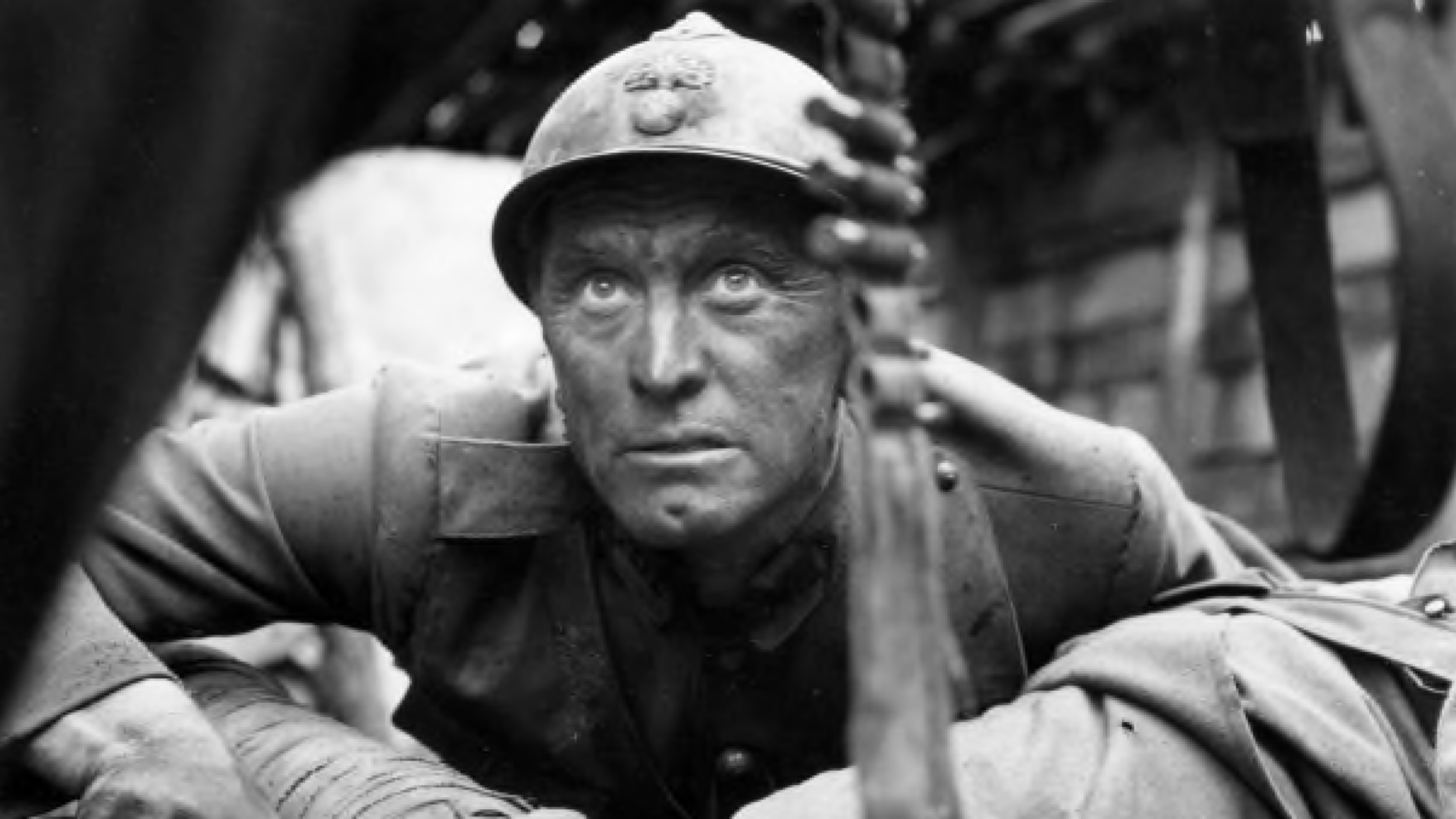
Kubrick took inspiration from Humphrey Cobb's novel to tell the story of a World War I Colonel who refused to walk his men to certain death. Kirk Douglas is steely as Colonel Dax, the commanding officer of four soldiers sentenced to death, who turns to his pre-war civilian life as a lawyer to defend the men. Along the way, he becomes strongly disillusioned with the madness of his superiors, part of Kubrick's strong anti-war sentiment making its way into the main part of the plot. As heavy-handed as that may be, it's the final twang that finds the survivors of Dax's company gathered in a local inn, knocking back the ale, and listening to a local woman sing, that packs the real punch. It's seeing Dax watch his men, eyes brimming with tears in the moment, knowing that they don't have long until the next big push.
6. Inglourious Basterds (2009)
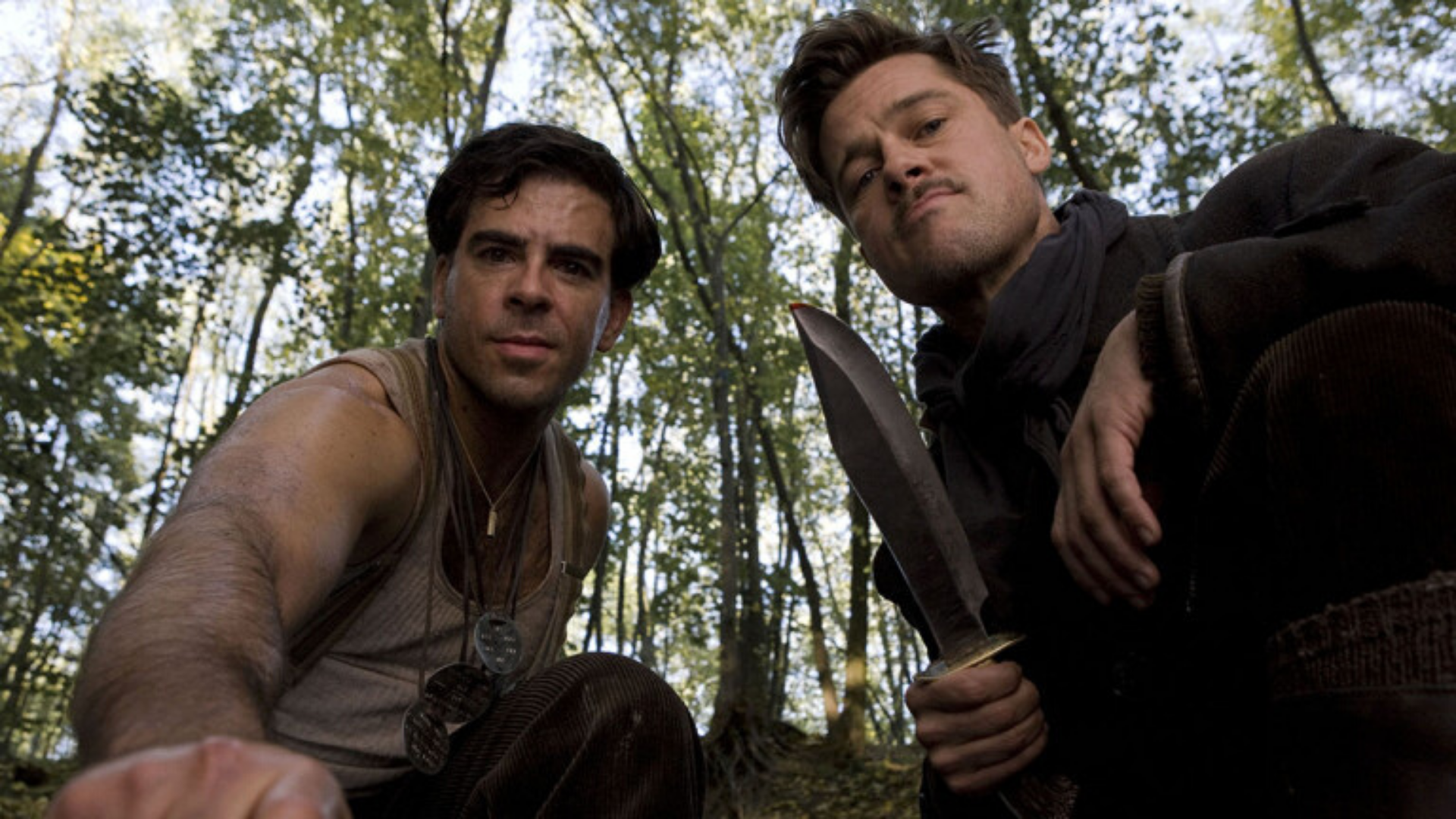
Tarantino says the dialogue he's most proud of is spoken during Inglourious Basterds' opening sequence when the ‘Jew Hunter’ Hans Landa (Christoph Waltz) calmly interrogates a French dairy farmer believing that he's harbouring Jewish refugees in his basement. It's testament to Tarantino's confidence that this scene is 15 minutes long – a terrific start to a World War 2 flick that's an action with a giant splat of camp comedy thrown in. The Basterds of the title – led by Brad Pitt's Aldo Raines, a take-no-bullshit Lieutenant who demands his men procure him hundreds of Nazi scalps – are part of the plot, that weaves in a dastardly scheme to take out the Third Reich's highest-ranking officials in a movie theatre. Beautifully nutty.
5. The Thin Red Line (1999)
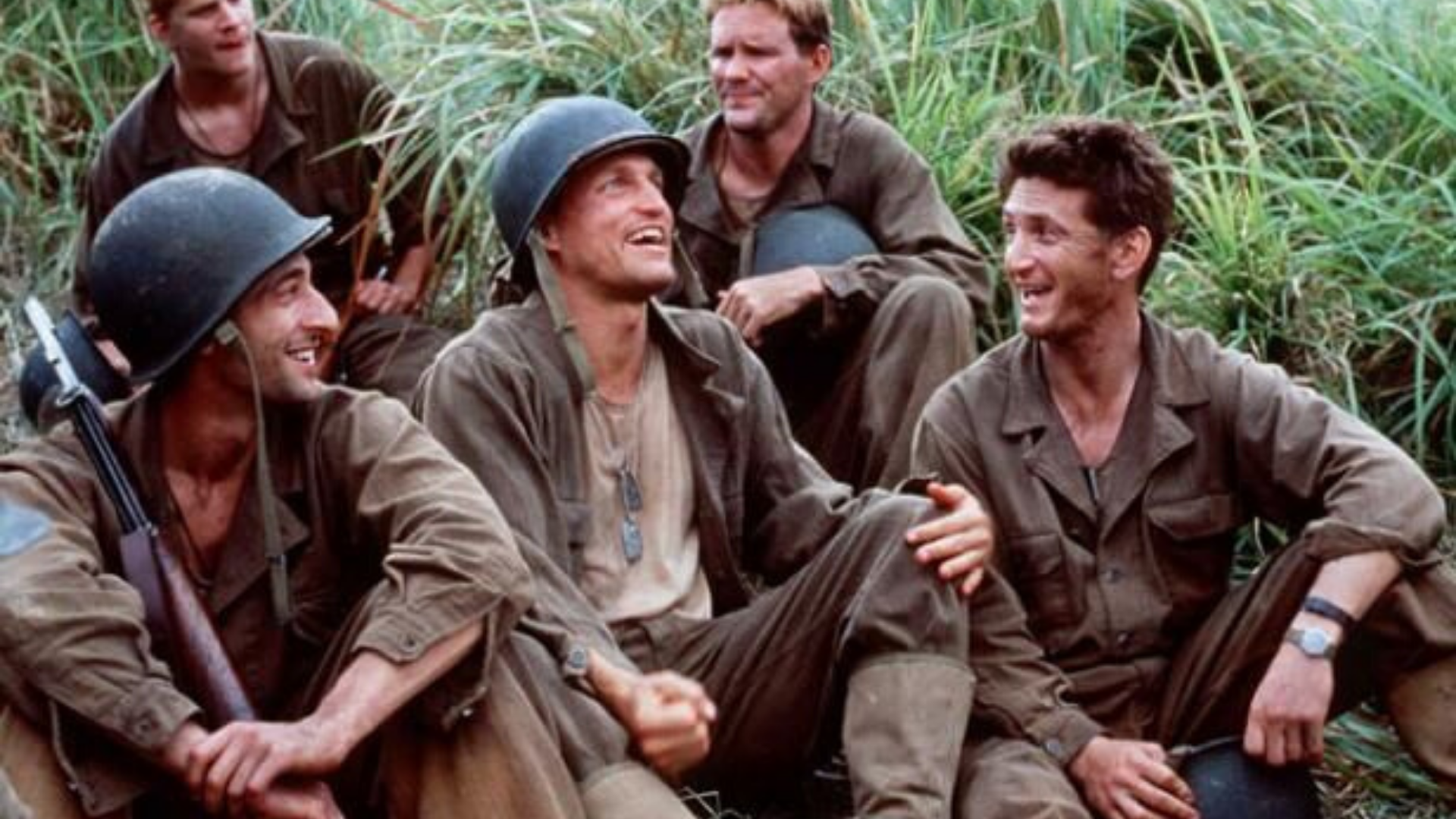
After being absent from the filmmaking circuit for 20 years, Terrence Malick returned with The Thin Red Line. A lingering, slow-drawl of a war film that shows how mankind's desire to fight one another devastates nature. Cut down from a much longer version, the finished movie surprised a lot of the cast – who learned in the theatre that their roles were bigger/smaller than expected. It's the thin red line of the title, which is, according to Malick, what separates the sane from the mad, that's best brought to life over and over in the performances of its soldiers. In particular? Nick Nolte's unhinged Colonel; possibly his best-ever role.
4. Full Metal Jacket (1987)
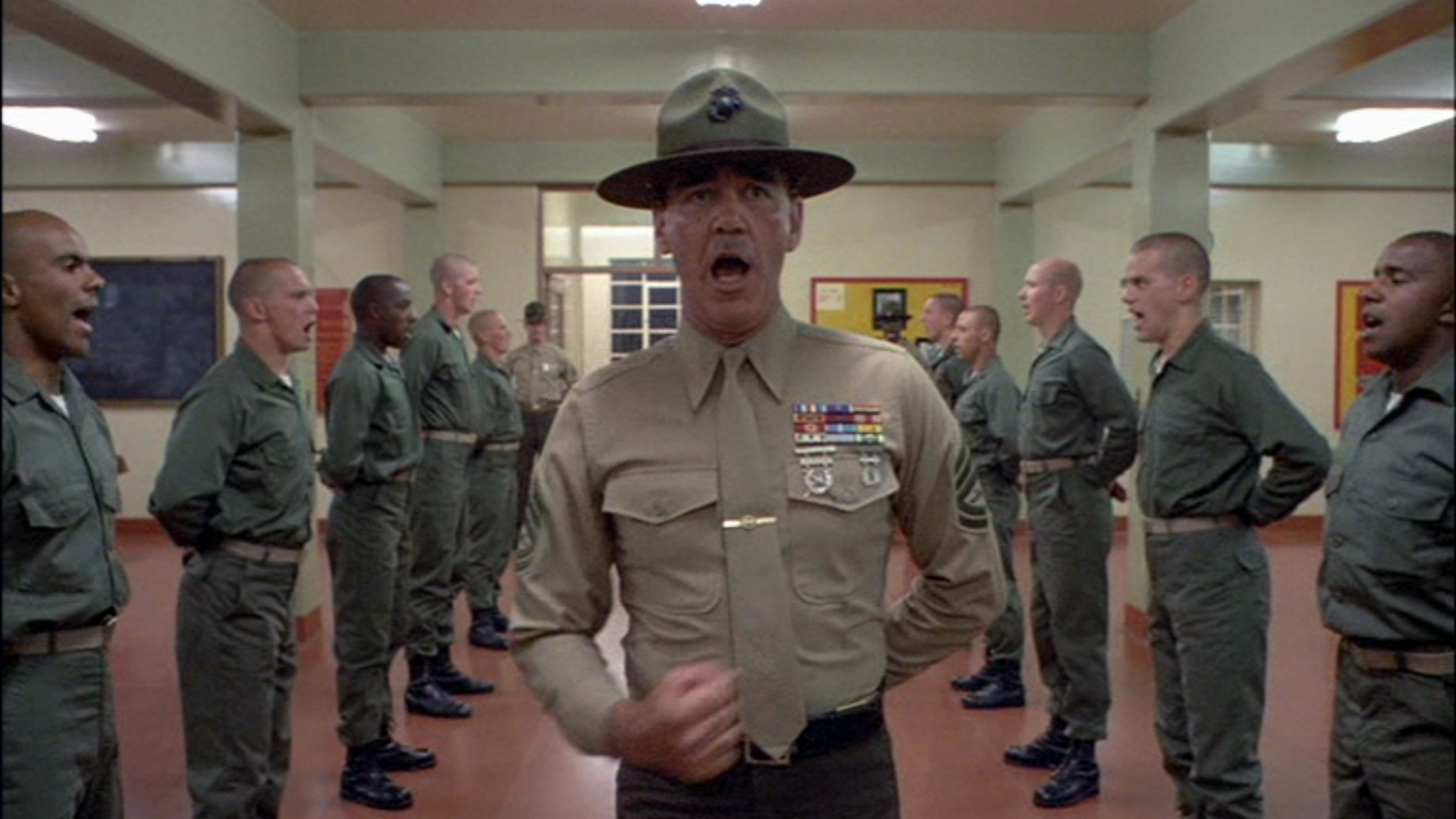
This dark comedy takes aim at the Vietnam war, told through the eyes of Matthew Modine's Joker, a man who hedges his bets by scrawling 'Born to kill' on his helmet but also wears a peace symbol, to show "the duality of man". Yeah, he's quite a character, and this is a film full of complex, troubled individuals each dealing with the pressures put upon them by their intense drill instructor. R. Lee Ermey's role is one of the most memorable of the whole movie, his torrent of insults designed to toughen up the men, the source of an hour-long improvisational rant. This is war, Kubrick-style.
3. Saving Private Ryan (1998)
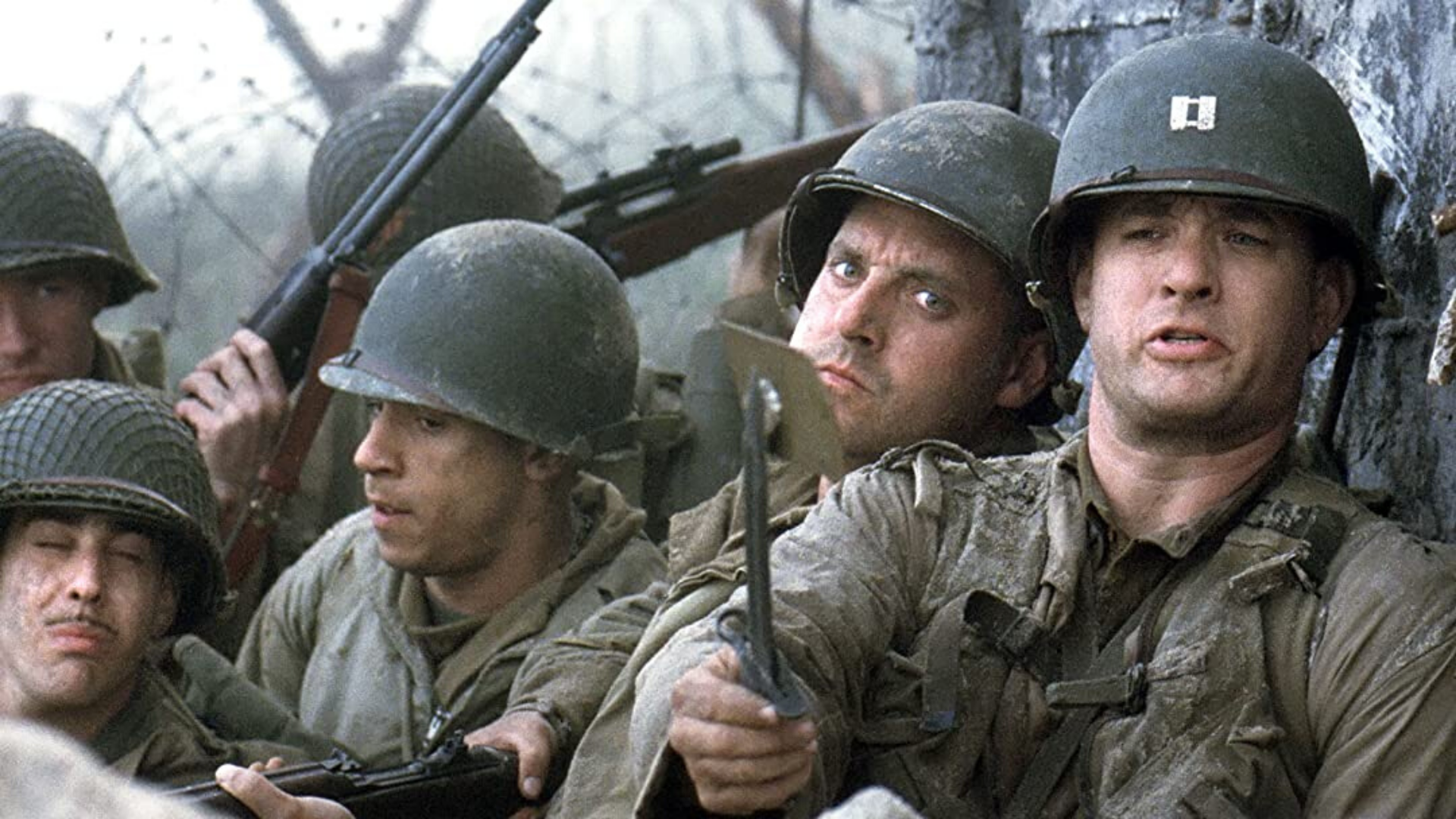
What’s one man's life worth? That's the staggeringly huge question Steven Spielberg sets out to answer in his blistering 1998 actioner. Its opening sequence never lets up as a US squad hits the beaches of Omaha, aiming to track down the last surviving son of a single American family and return him safely home. The cast assembled here is terrific, with all of them on the top of their game and working together to bring out the best in each other’s performances. There's nothing flashy or glitzy about the harrowing truths of war here, as Tom Hanks' leader pushes his team into the darkest parts of conflict. This is a brutal and totally unflinching dip into wartime violence.
2. Dr. Strangelove (1964)
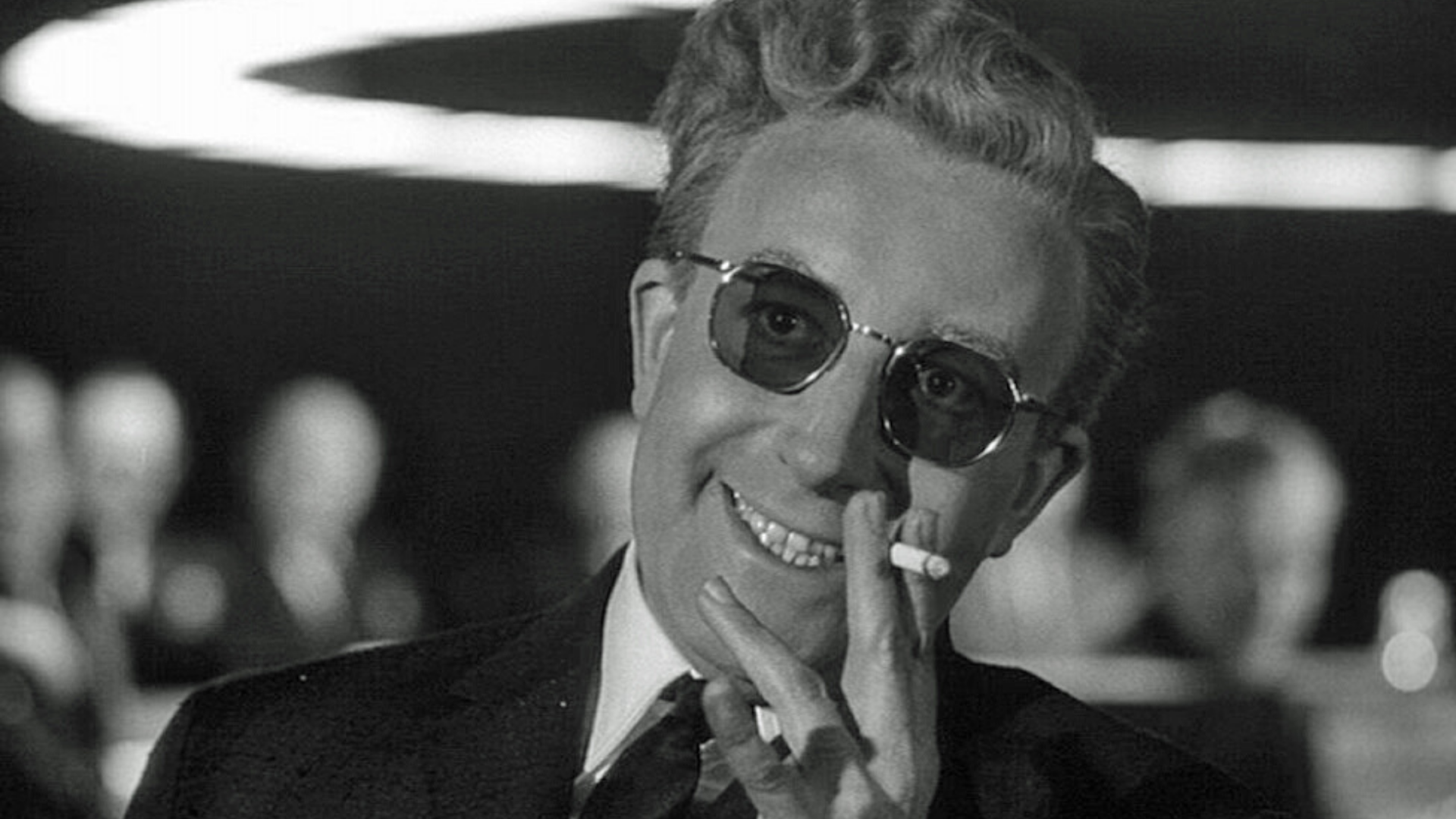
Stanley Kubrick remains one of the greatest war directors ever to grace cinemas. However, where Paths of Glory went to the trenches, and Full Metal Jacket exposed the Vietnam war, Dr. Strangelove satirises the cold war without showing us much conflict. Instead, the primary action takes place in the now-iconic War Room, as army generals argue about how to prevent nuclear war and a Doomsday device is brought to them. It's darkly funny yet terrifyingly believable. Vera Lynn's "We'll Meet Again" has never been used in such an ironic fashion.
1. Apocalypse Now (1979)
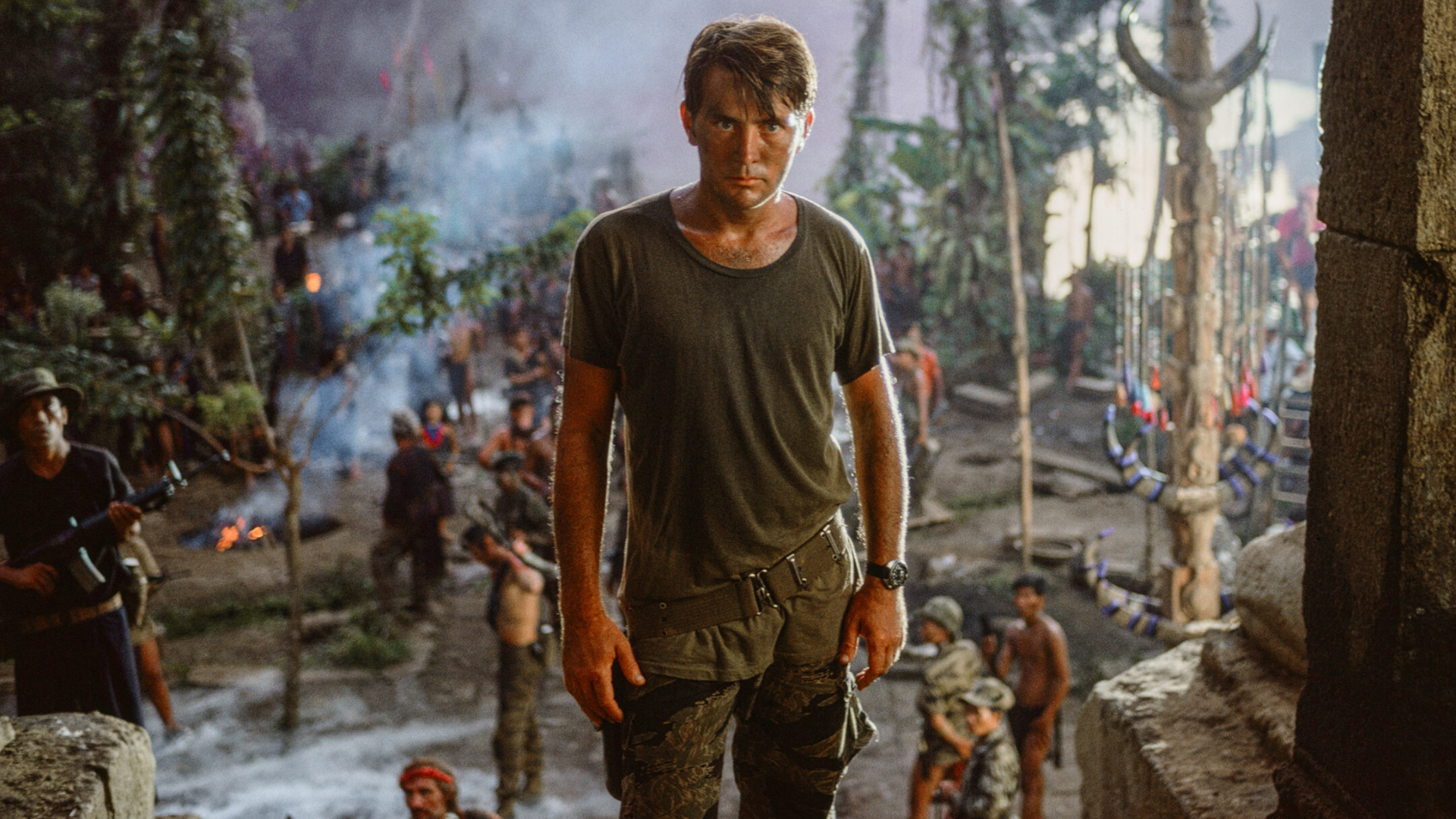
The hallucinatory madness depicted in Francis Ford Coppola's Apocalypse Now is unlike any other Vietnam movie. There's nothing remotely normal about the film's take on war; this isn't a typical tale of us versus them. Martin Sheen's Captain Willard is sent on a kill mission. It's up to him to take out the seriously unhinged Colonel Kurtz who's gone off the deep end. Watching Willard himself try and keep it together amidst Wagnerian helicopter attacks, tigers, Playboy bunnies, and Dennis Hopper's mental photographer is a pure cinematic delight. It begs the question; who's really losing their mind here? Sheen or the absolutely mad as a hatter Kurtz, played by Marlon Brando? The casualties of war shown here are the minds of men.

Jack Shepherd is the former Senior Entertainment Editor of GamesRadar. Jack used to work at The Independent as a general culture writer before specializing in TV and film for the likes of GR+, Total Film, SFX, and others. You can now find Jack working as a freelance journalist and editor.


